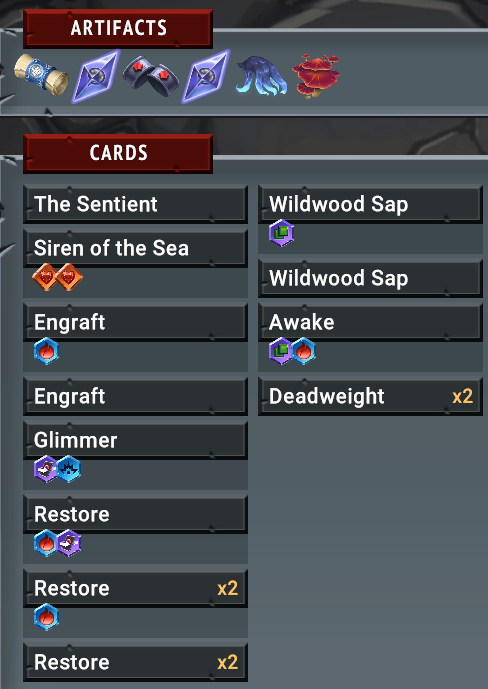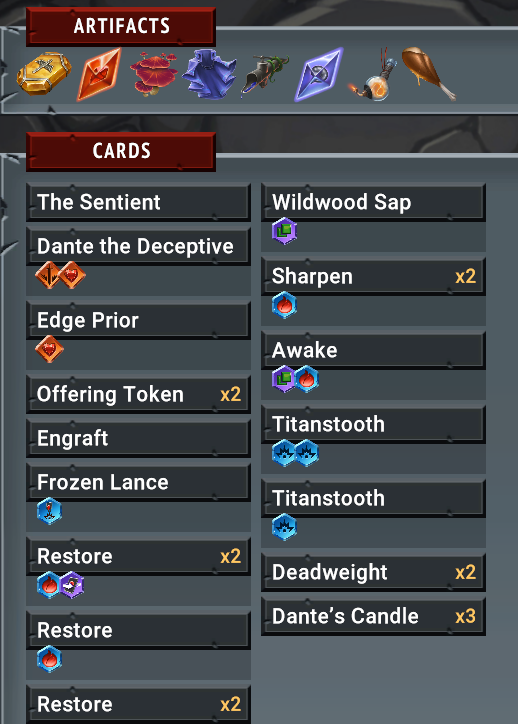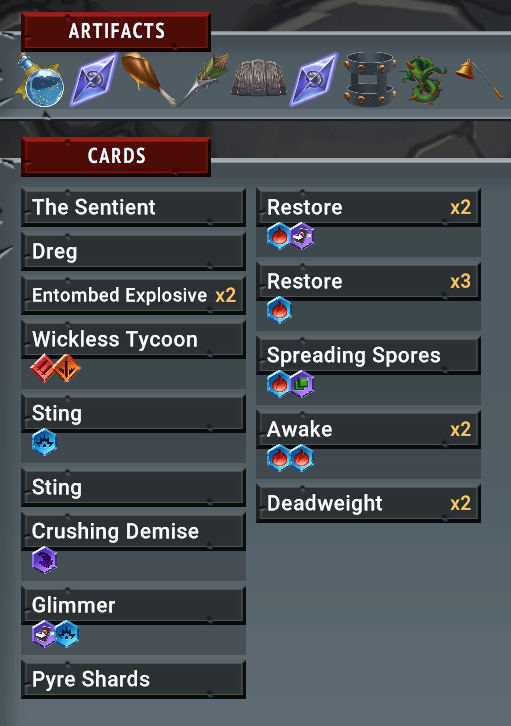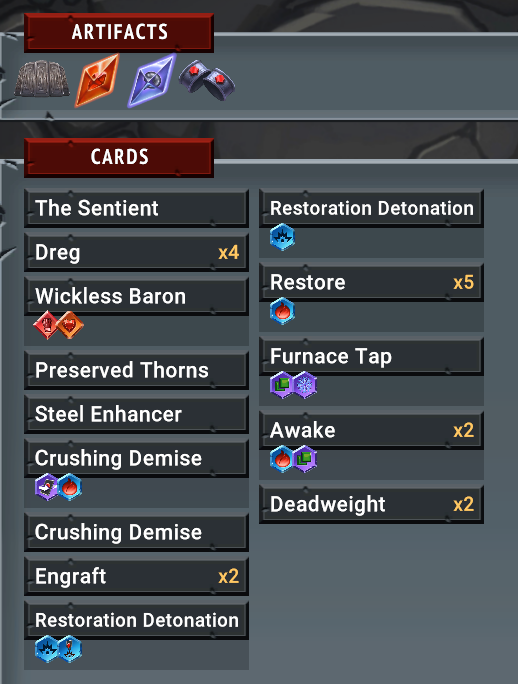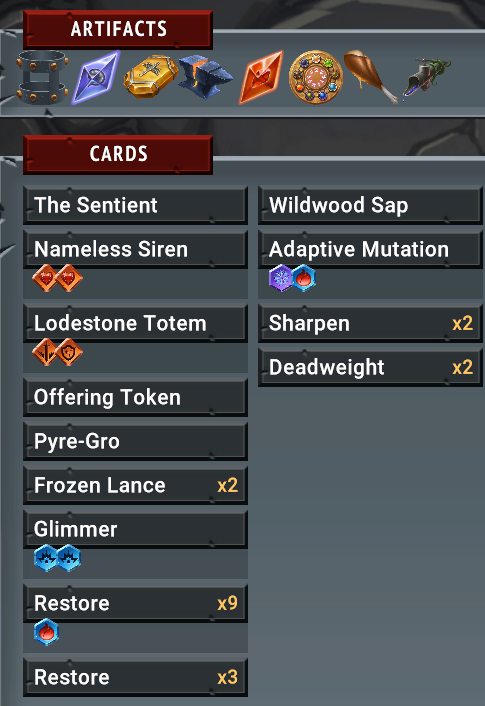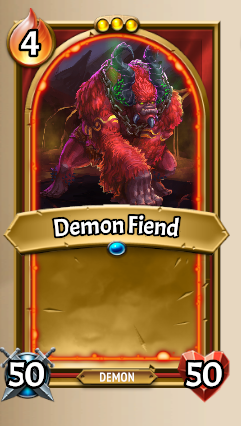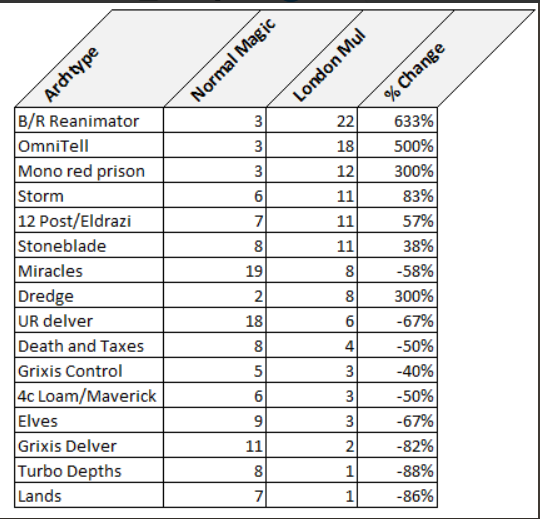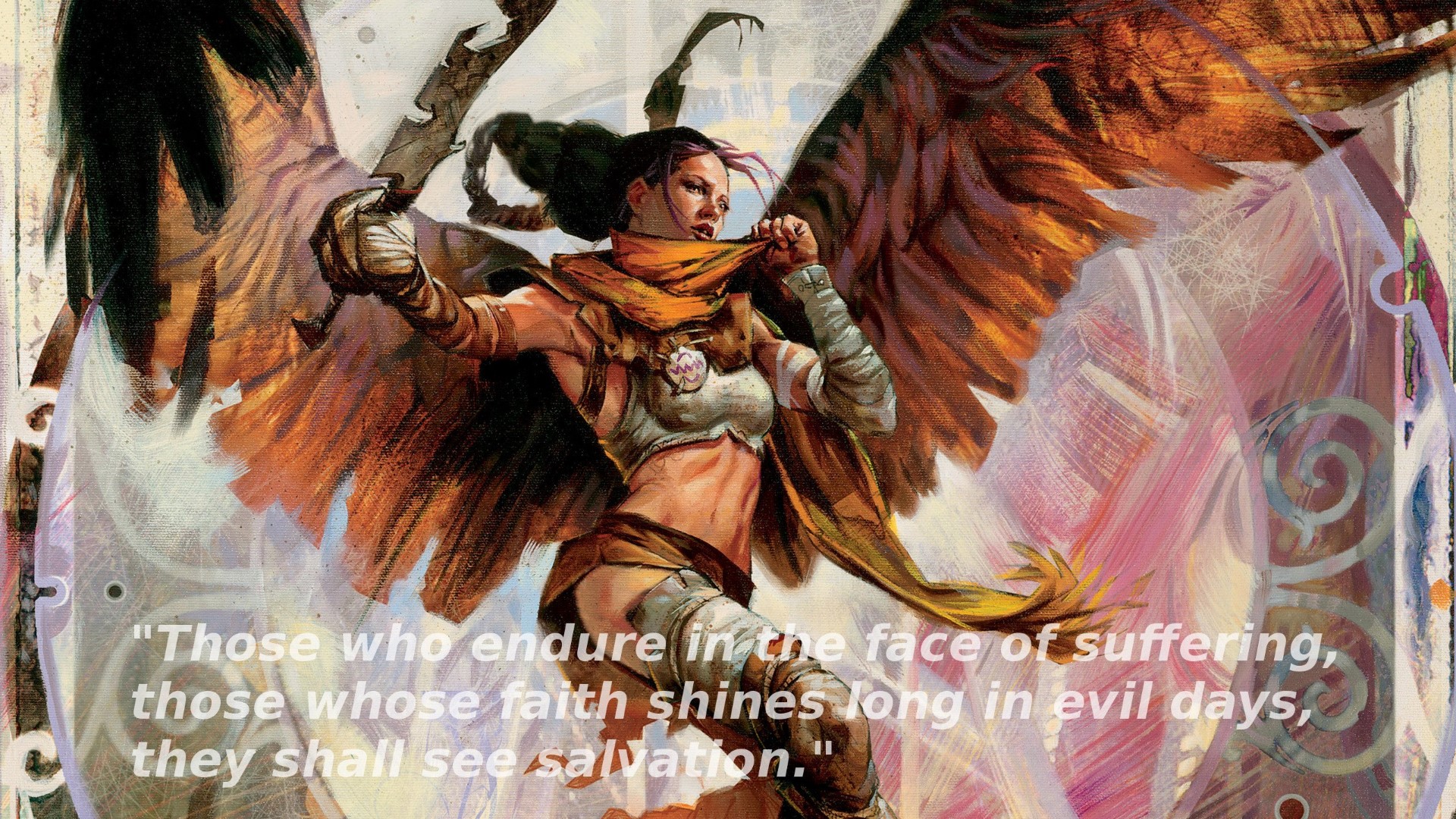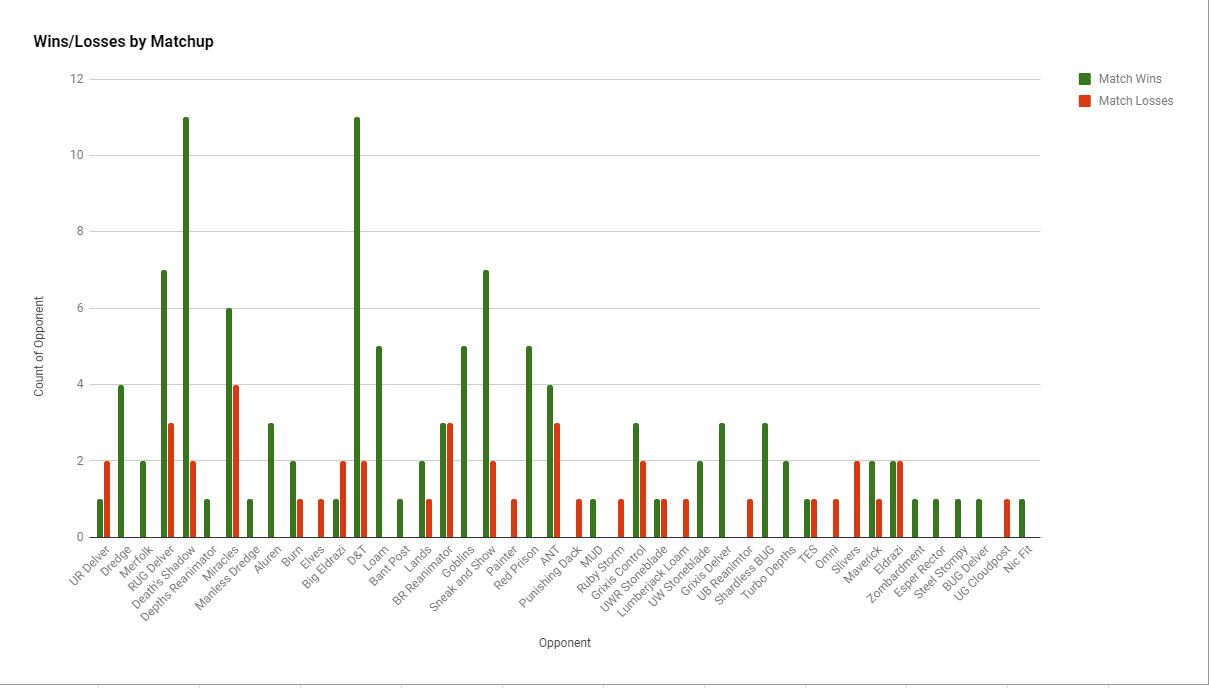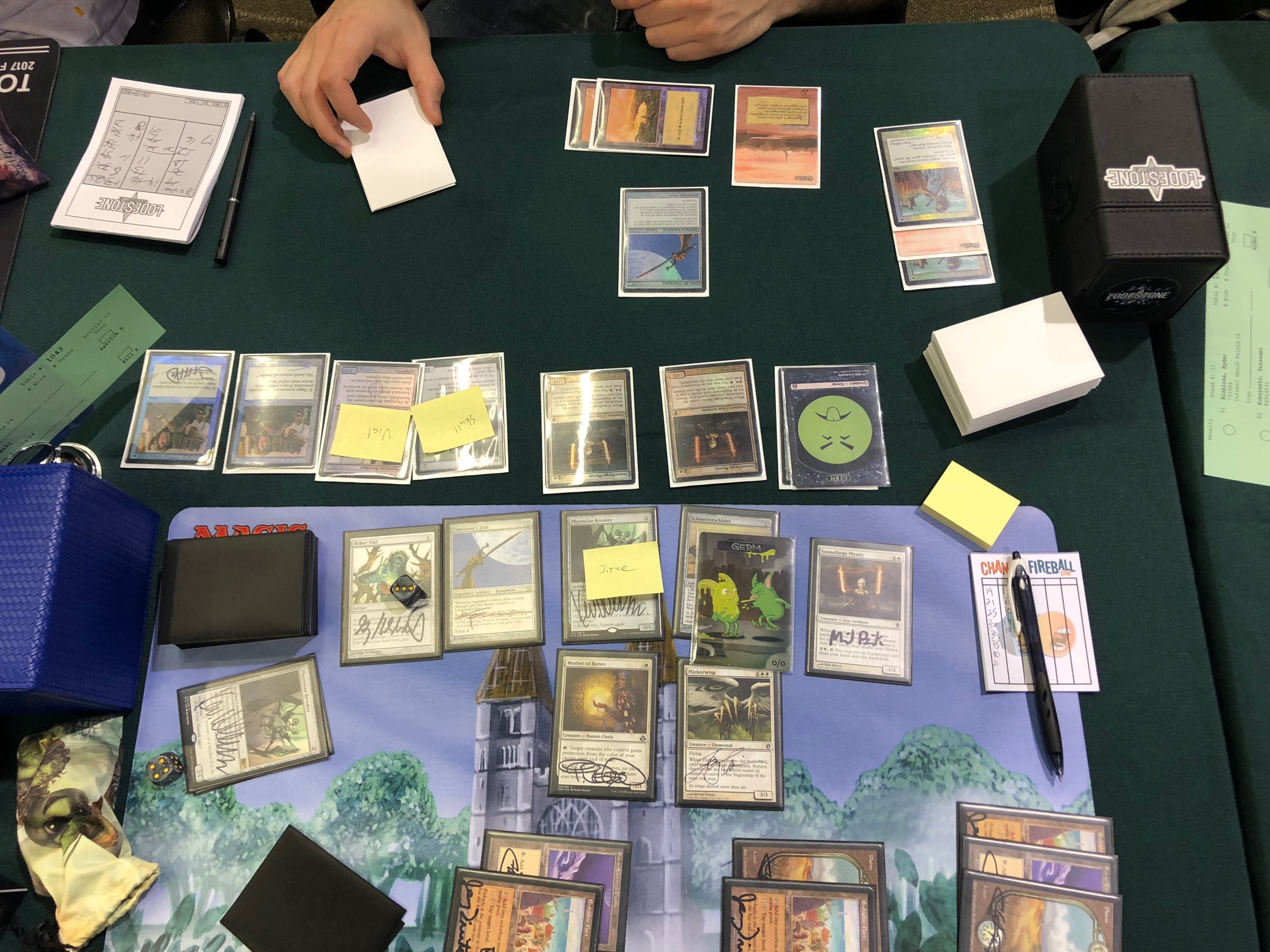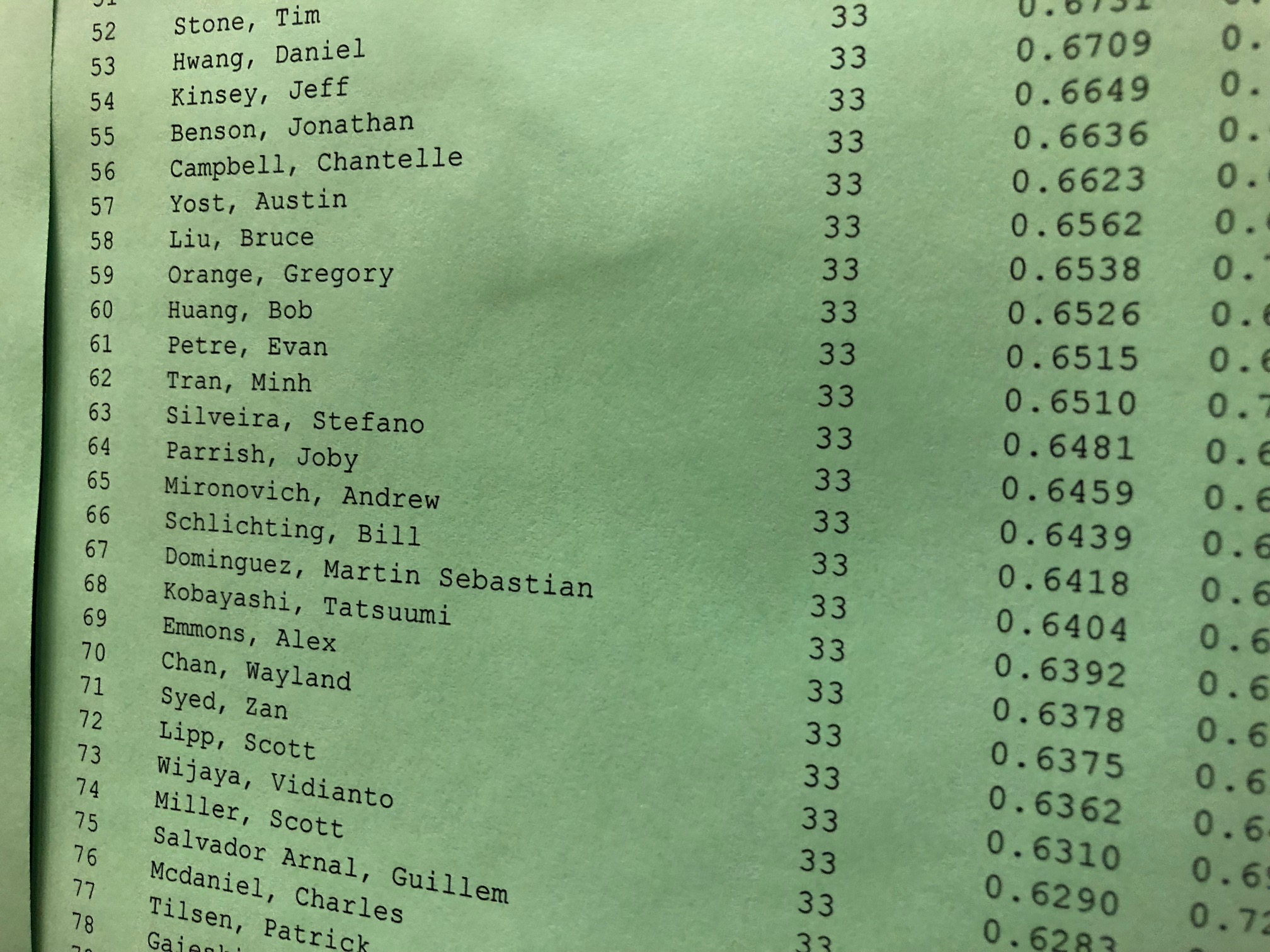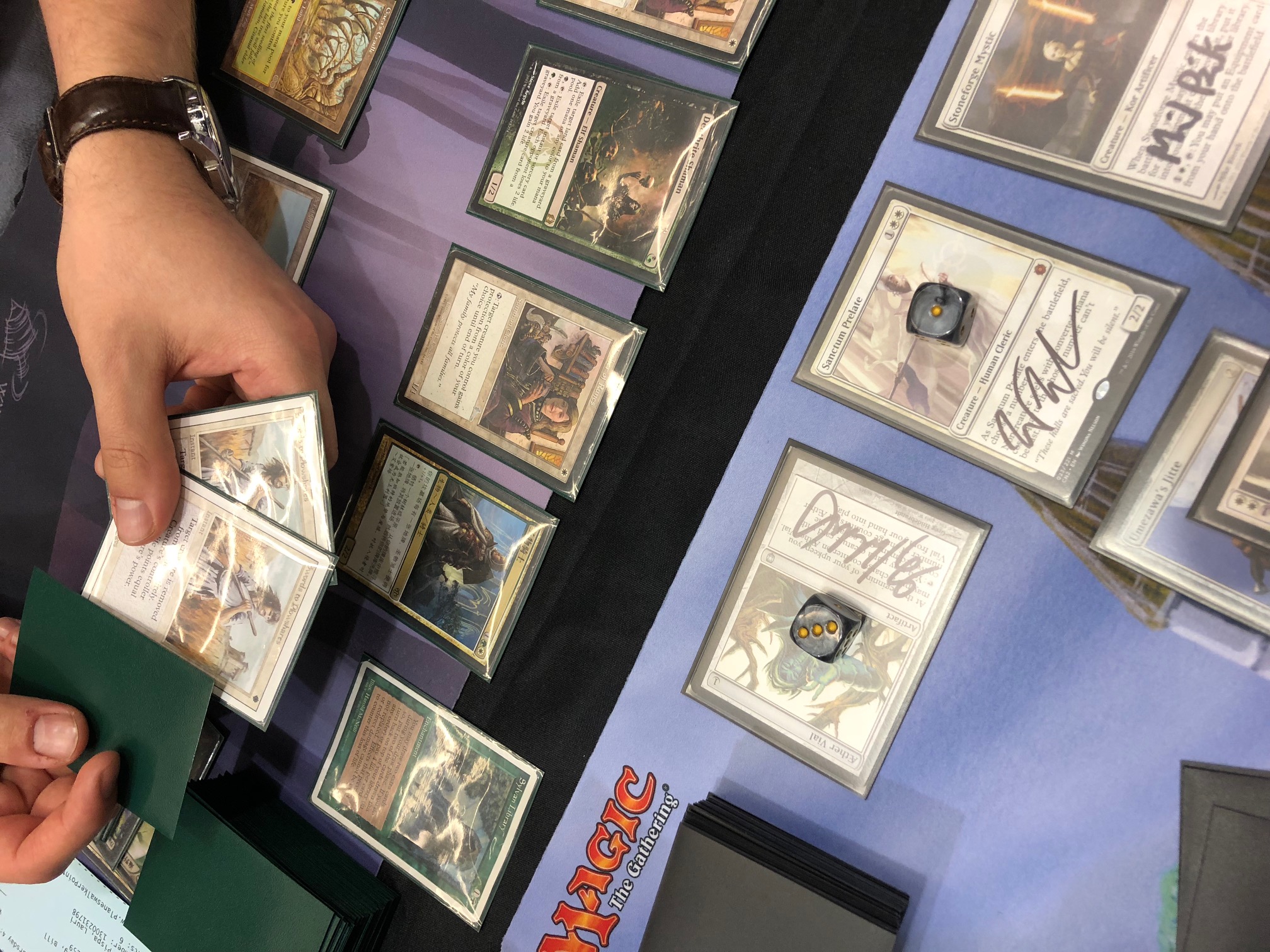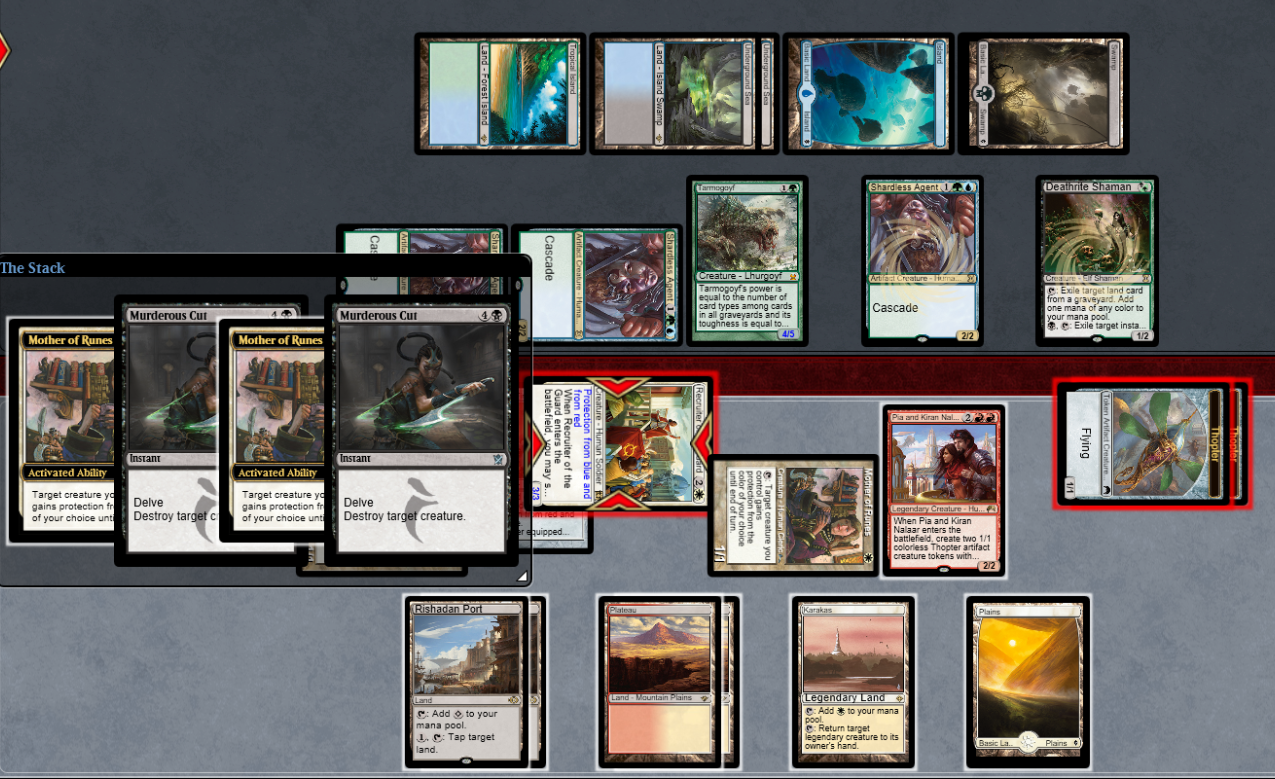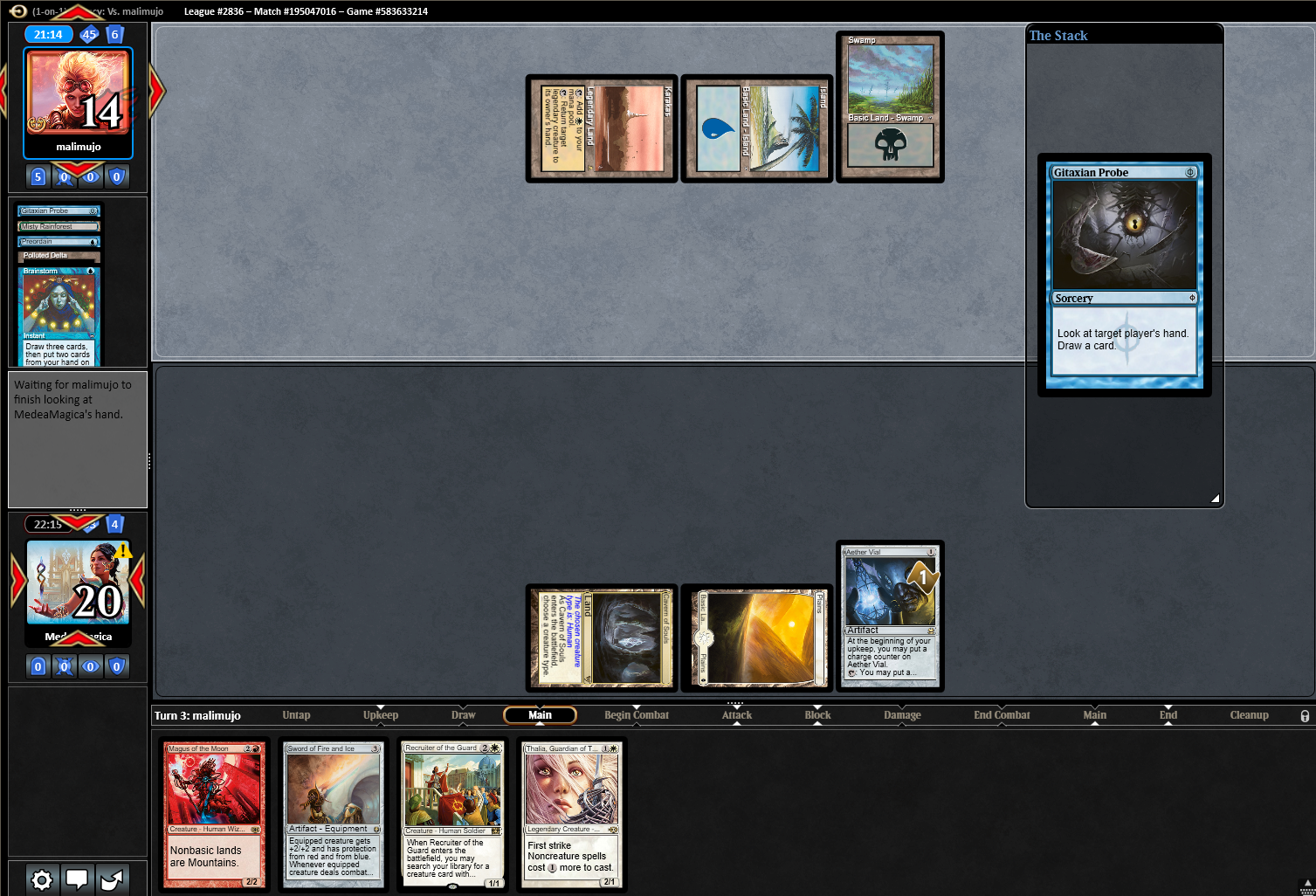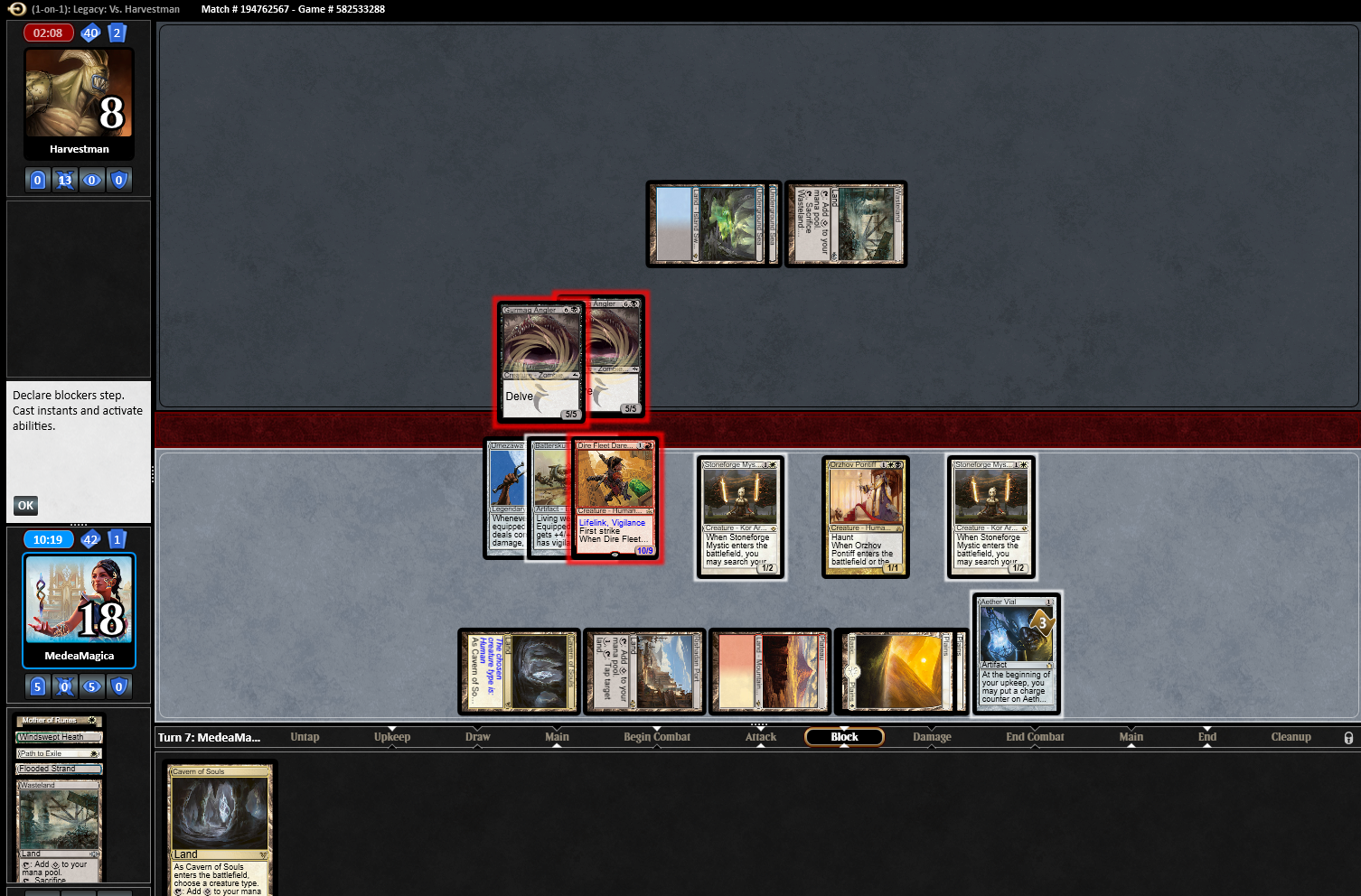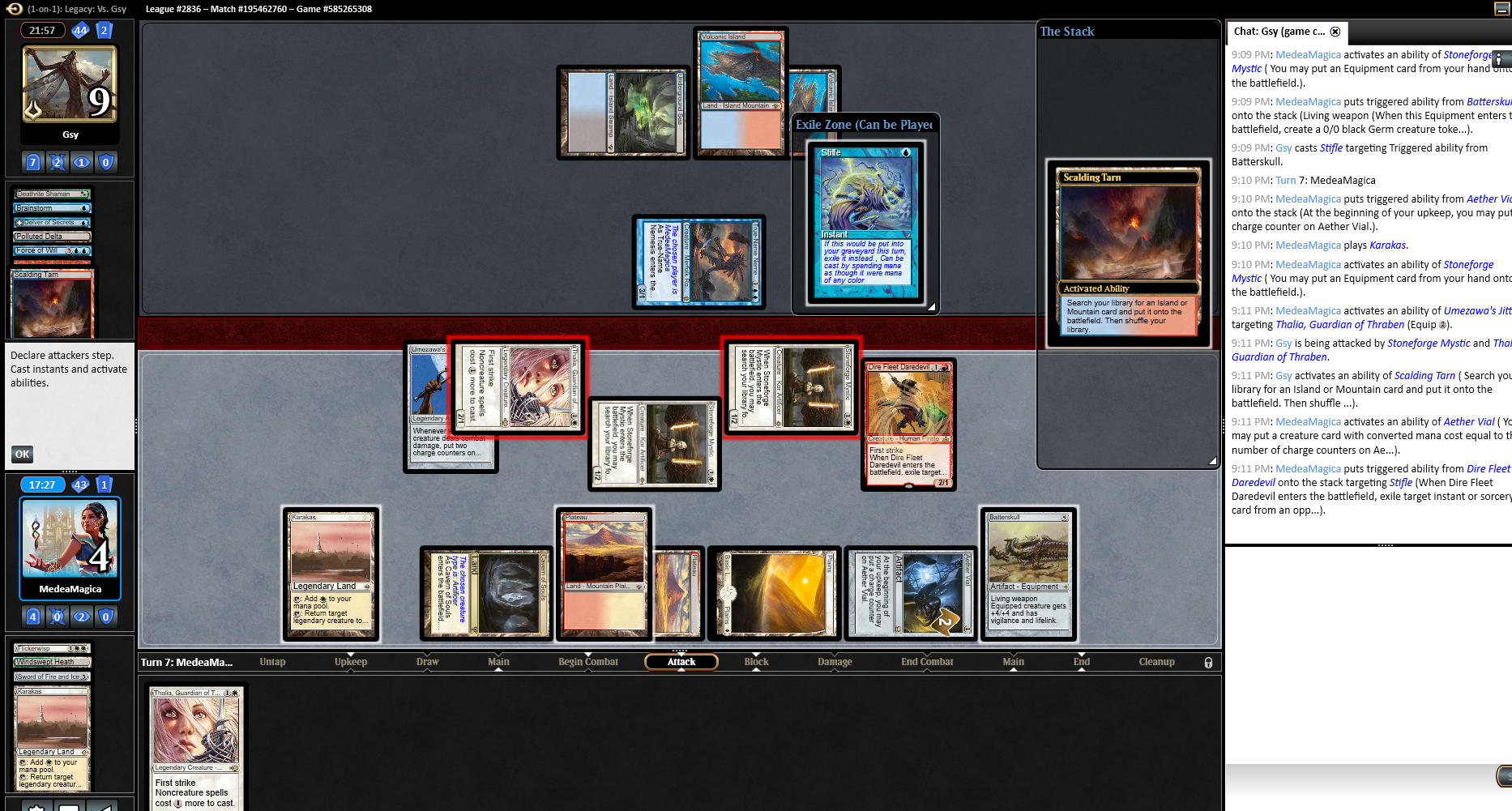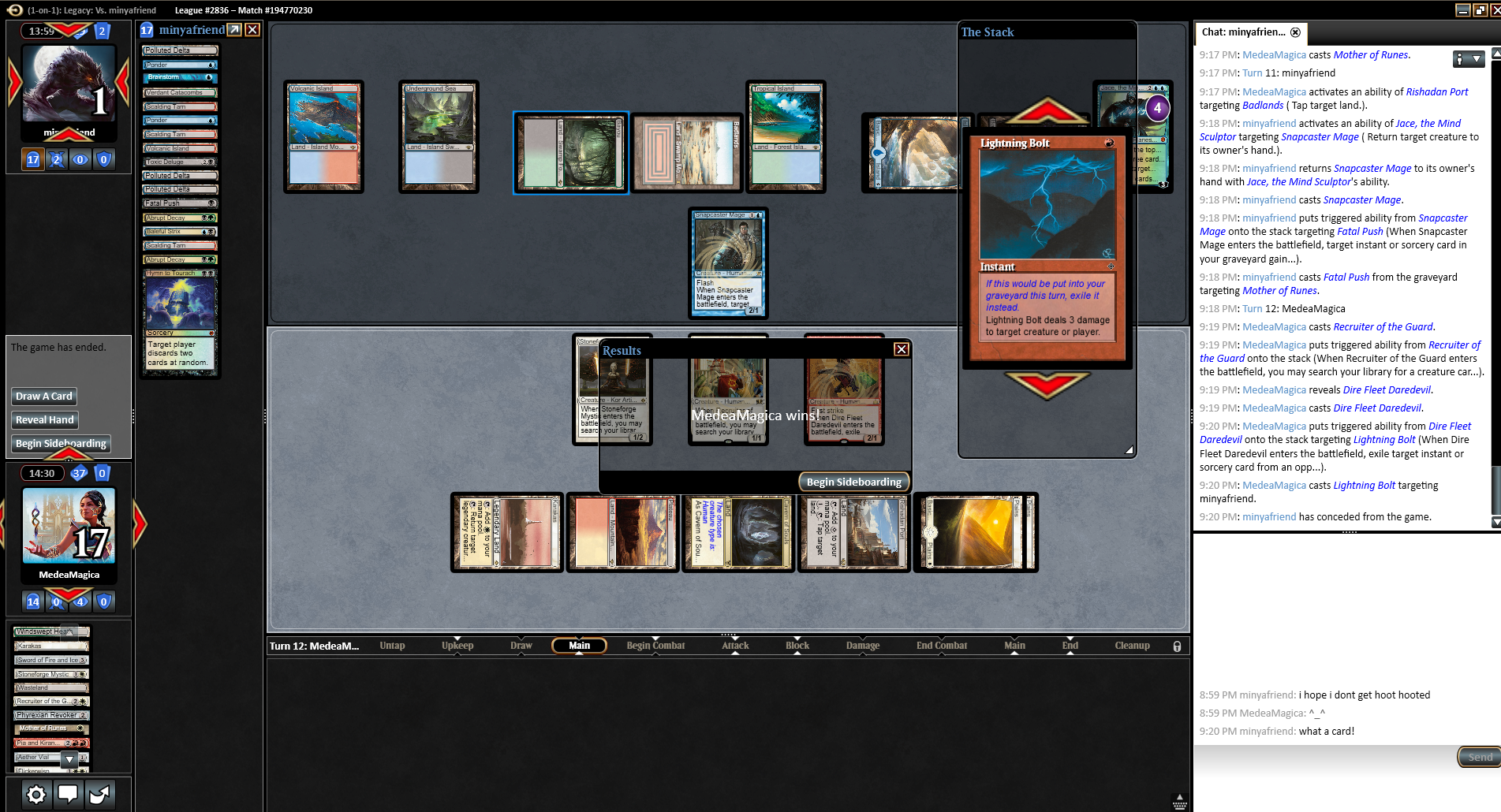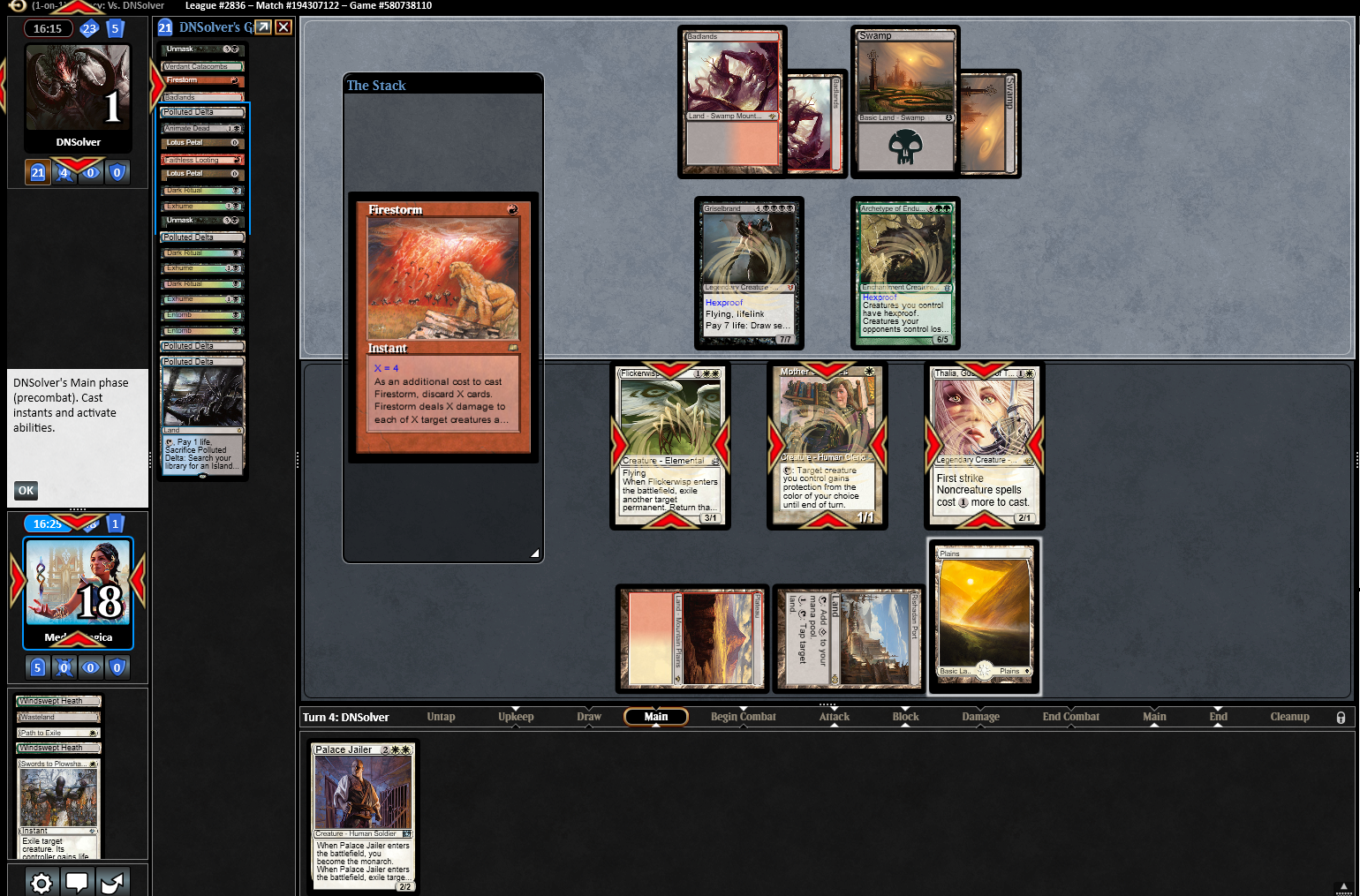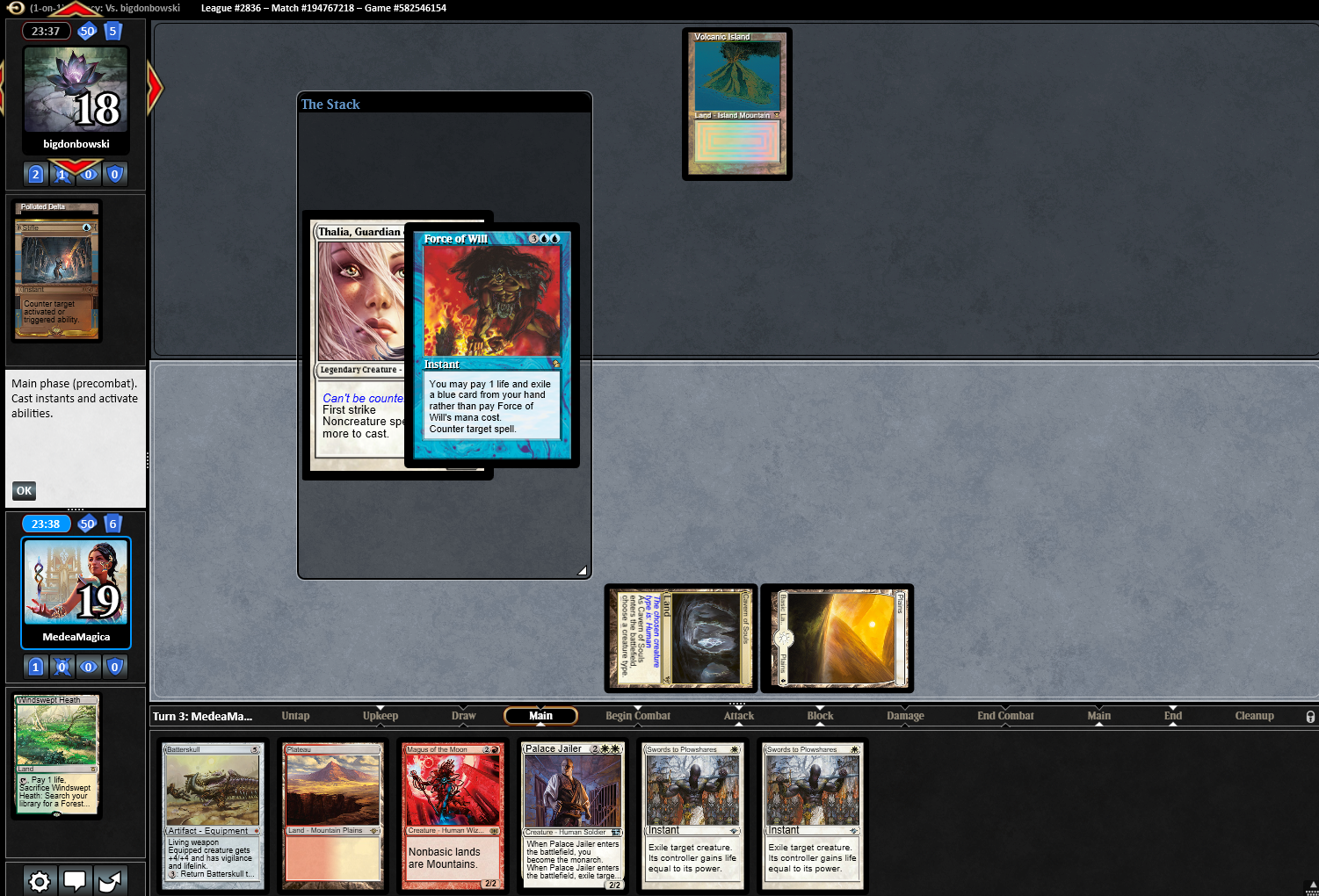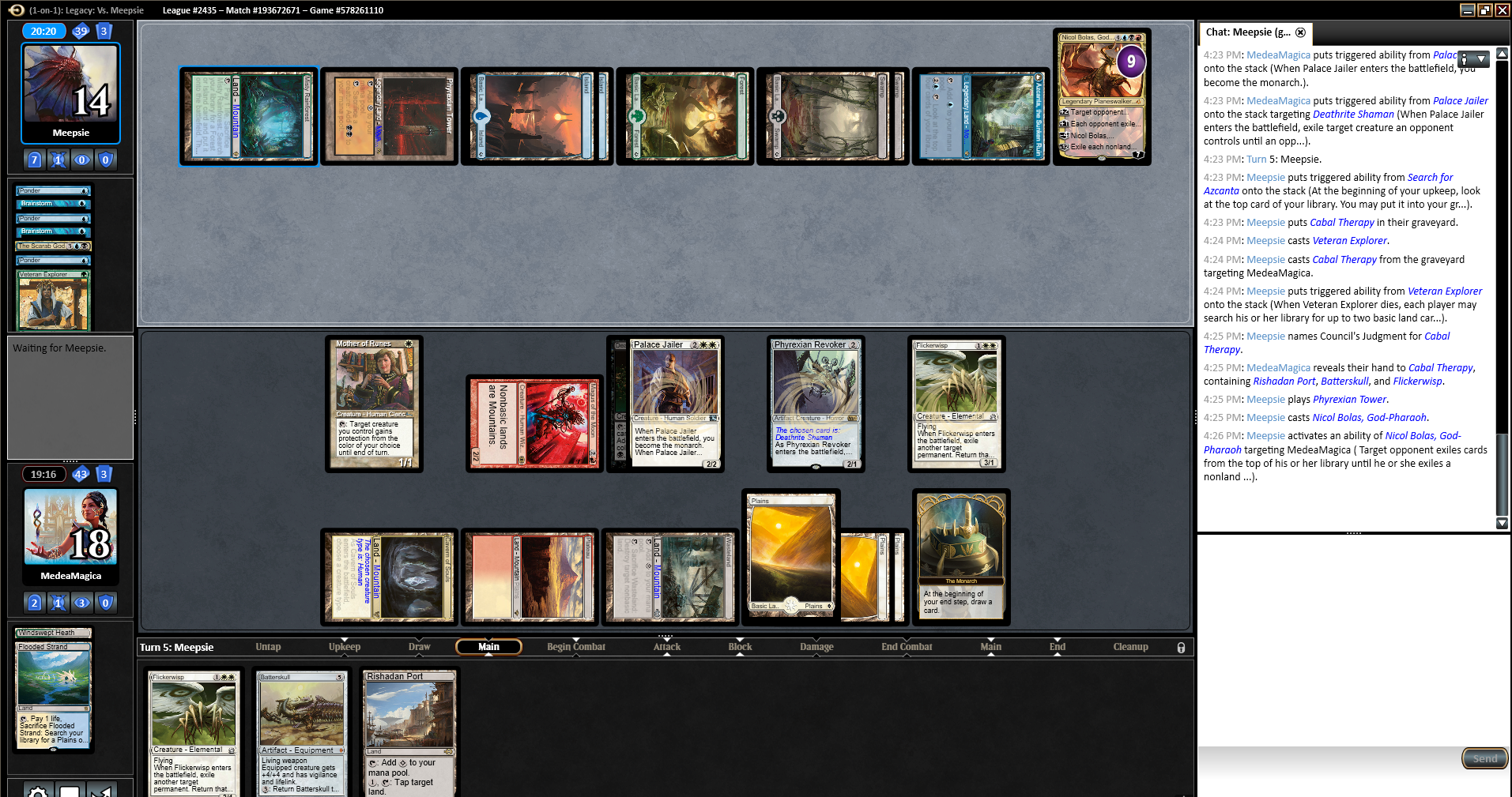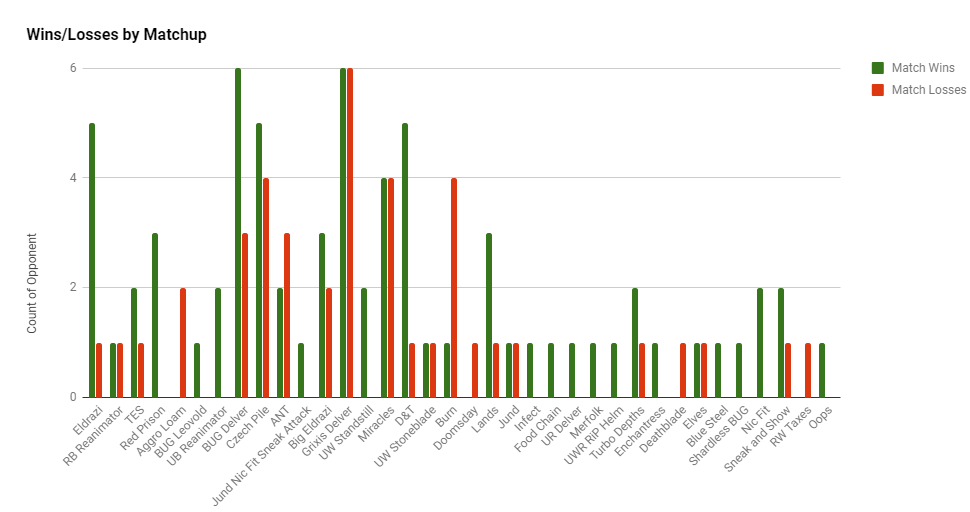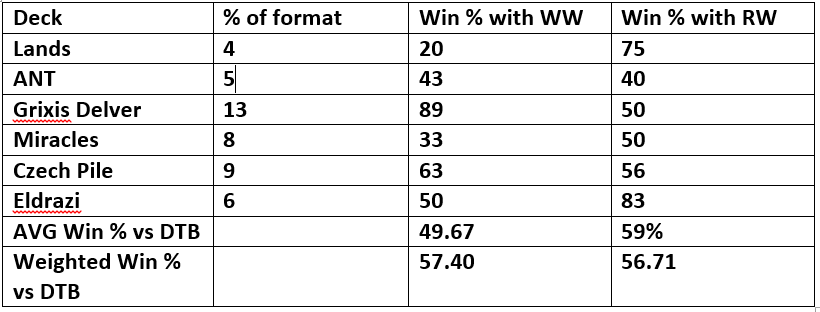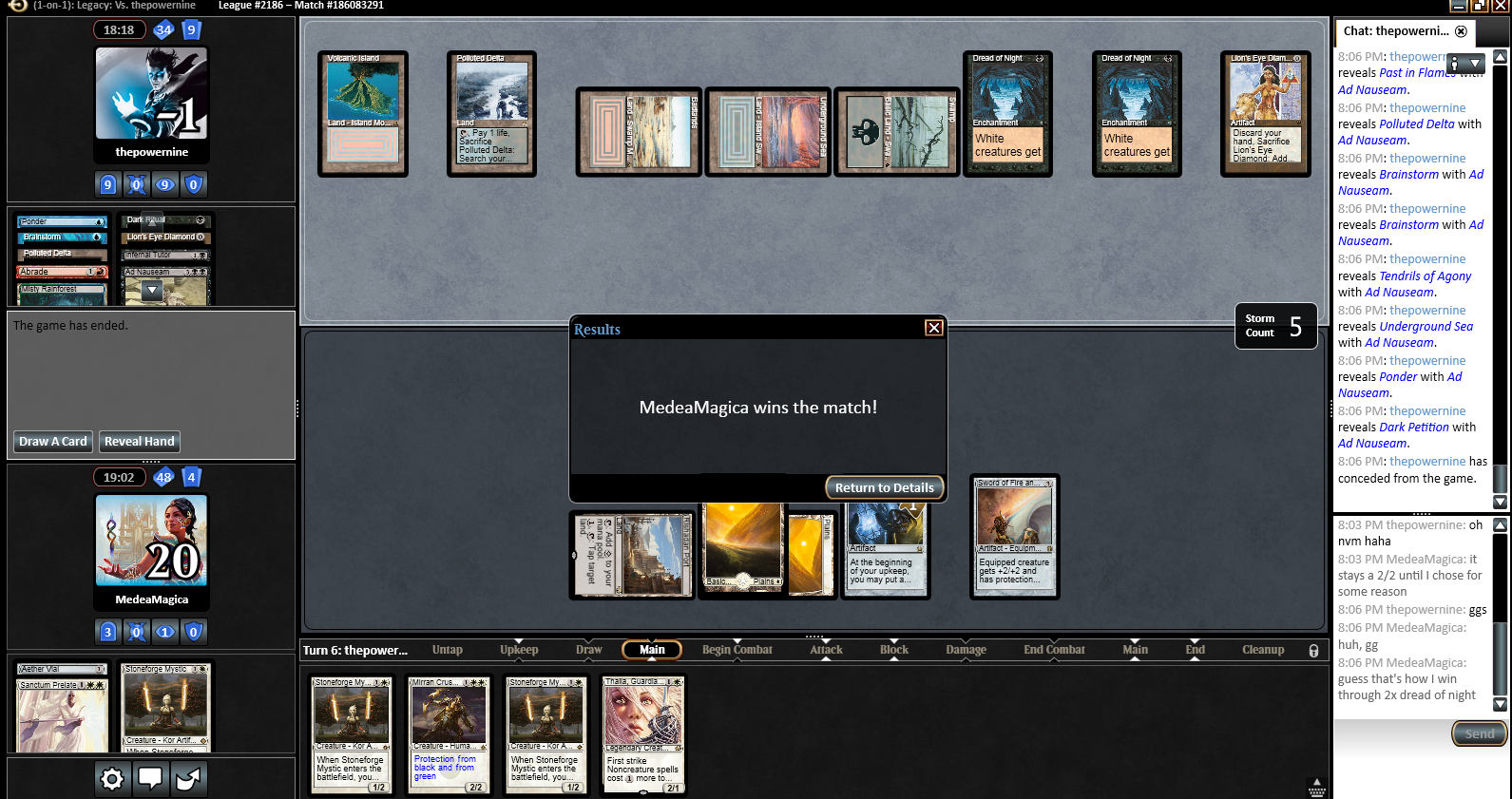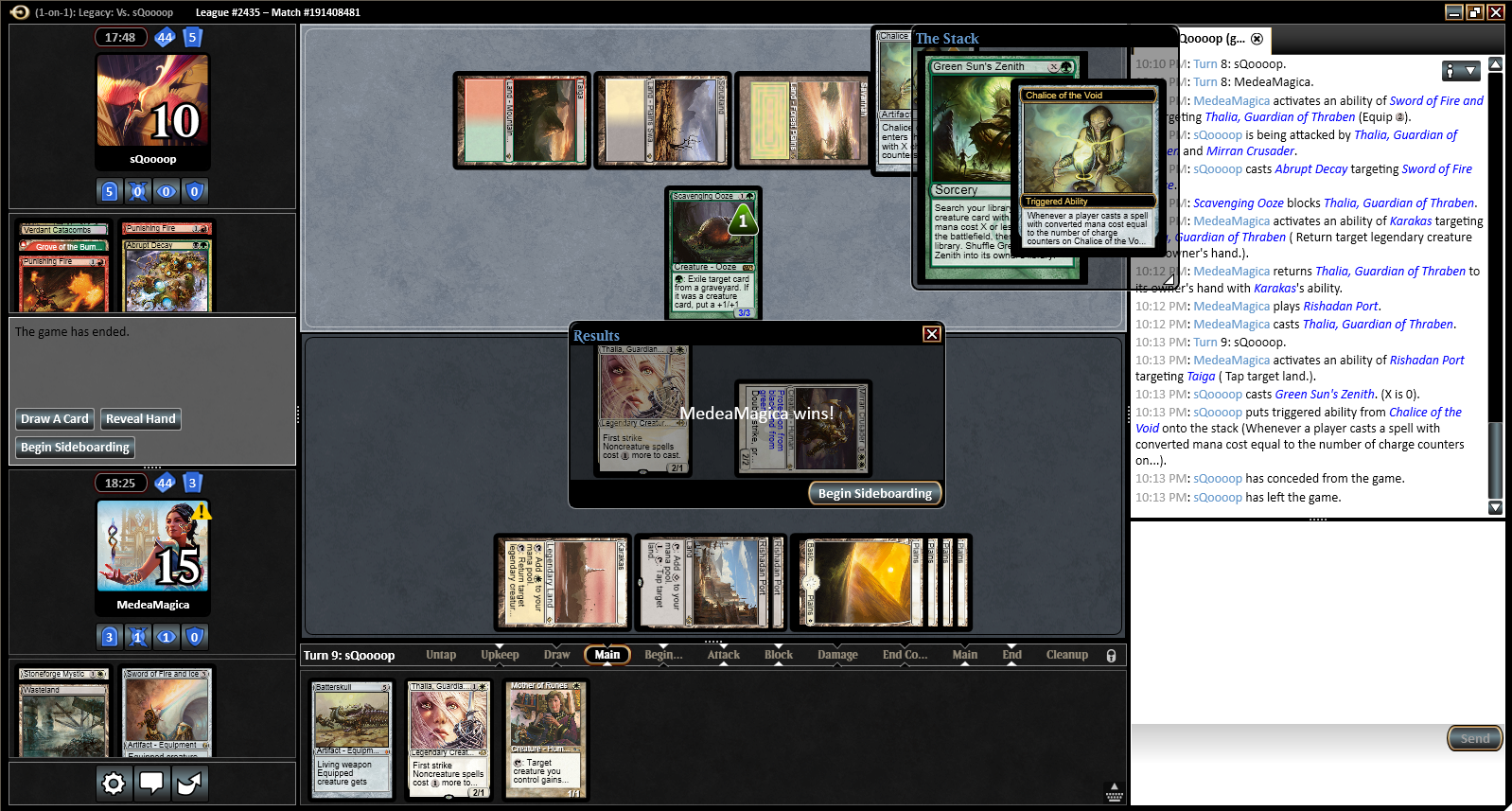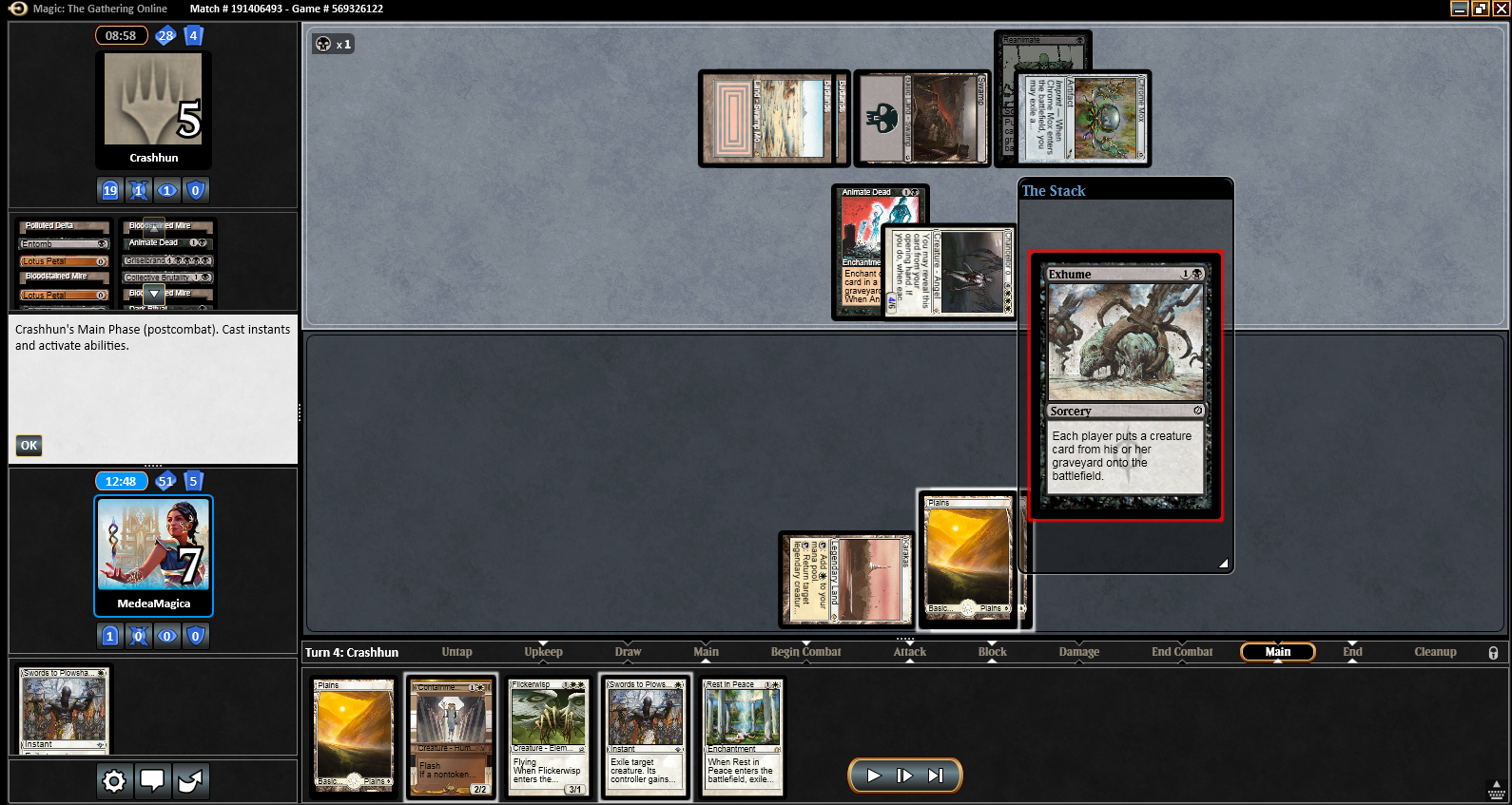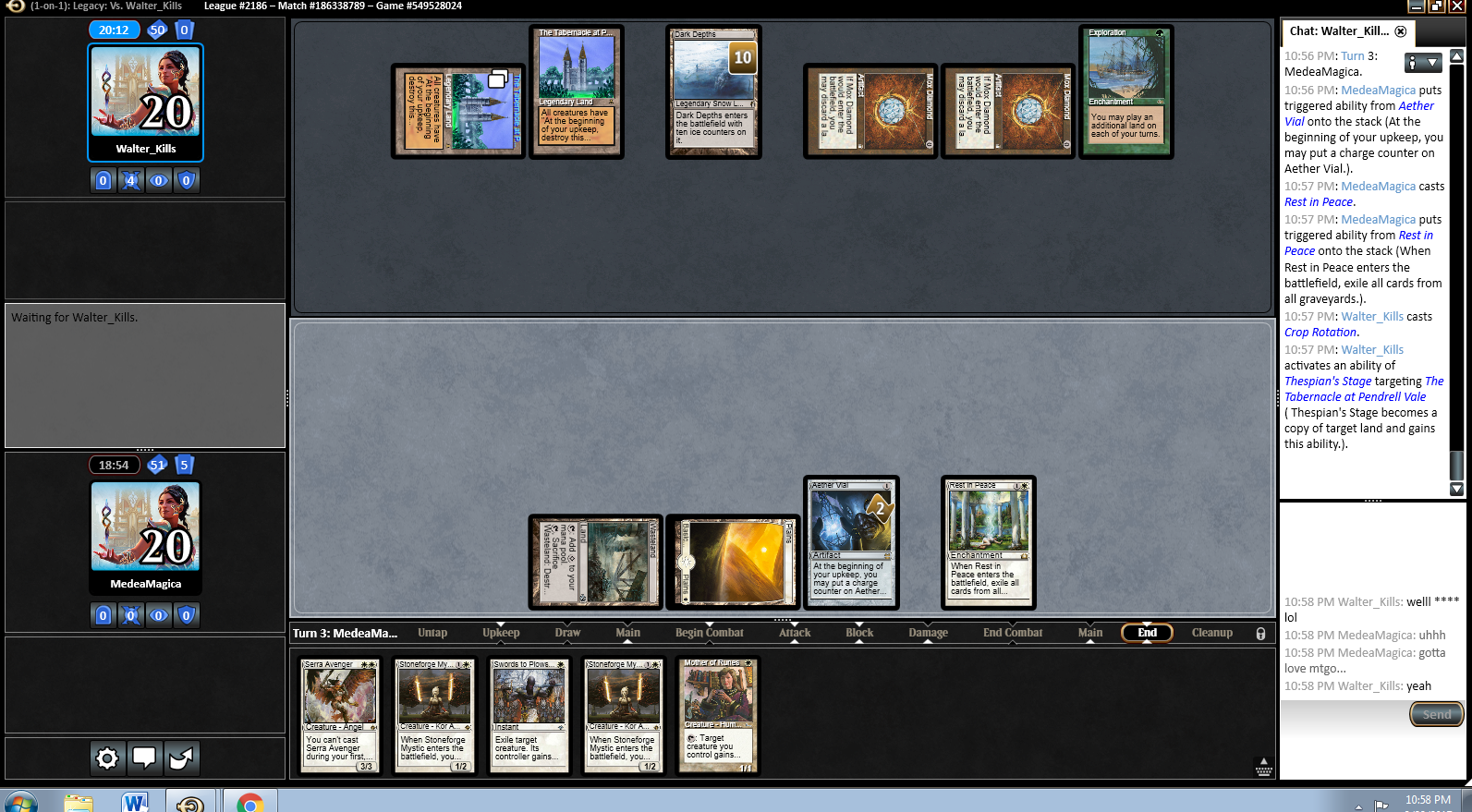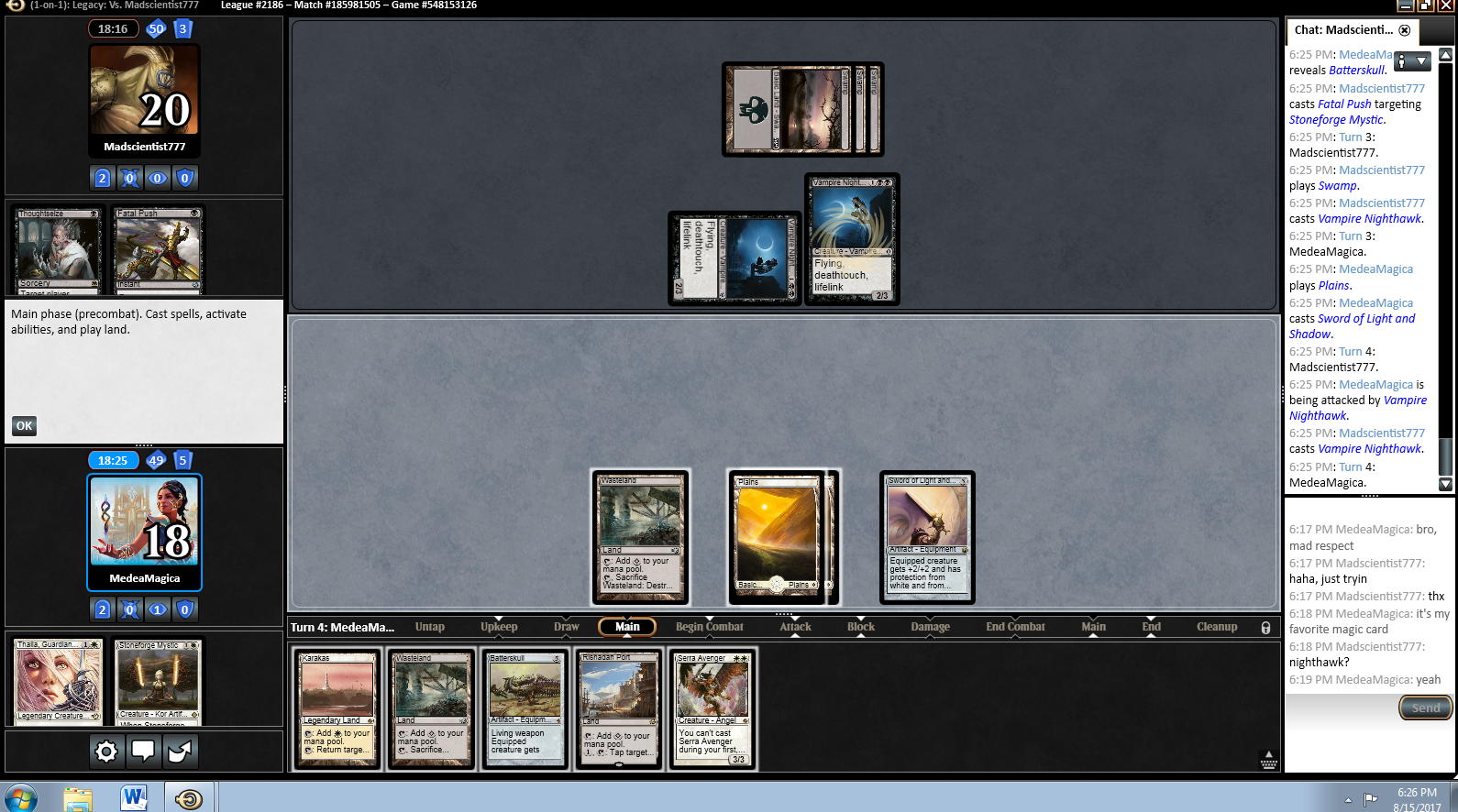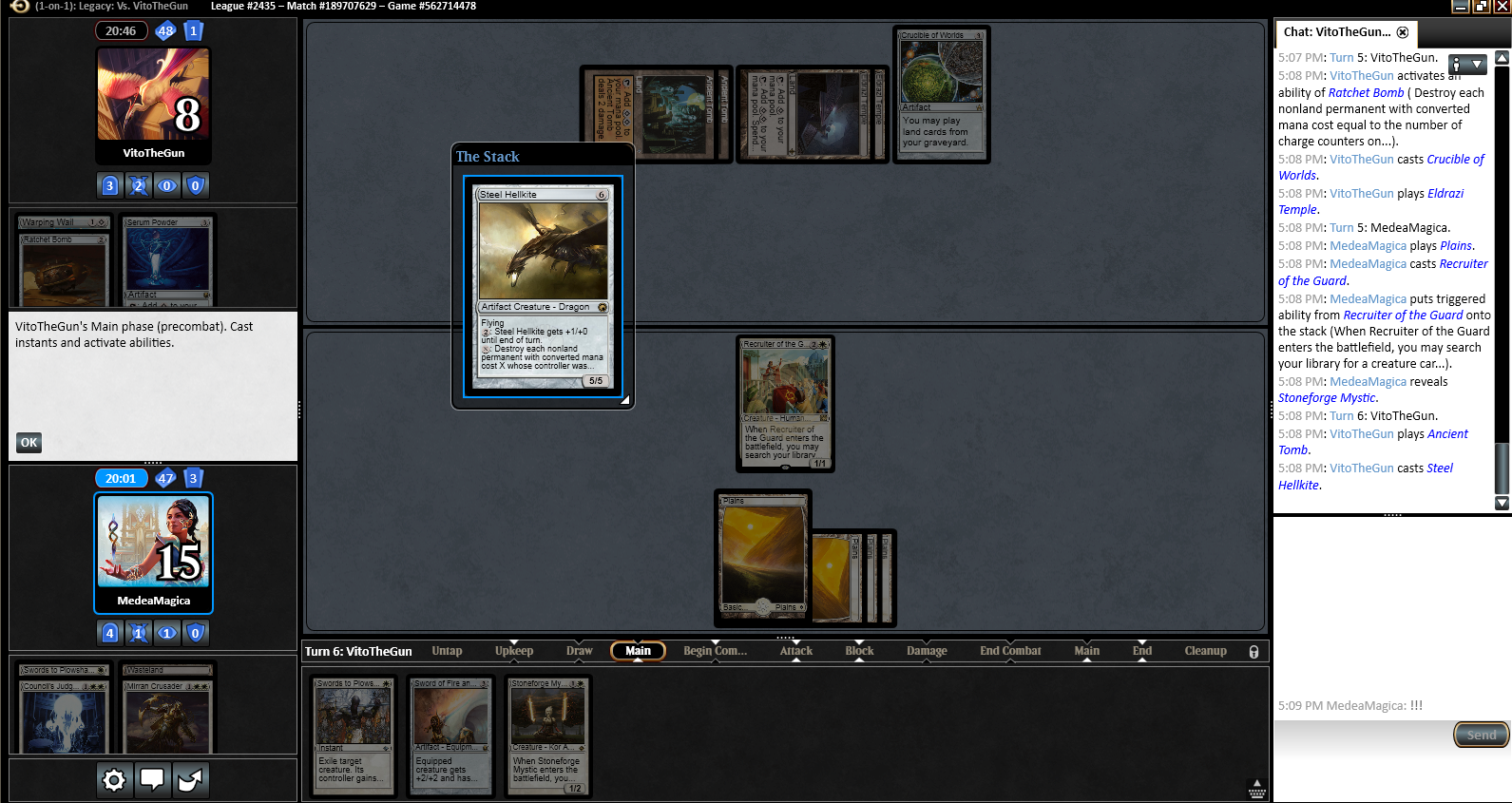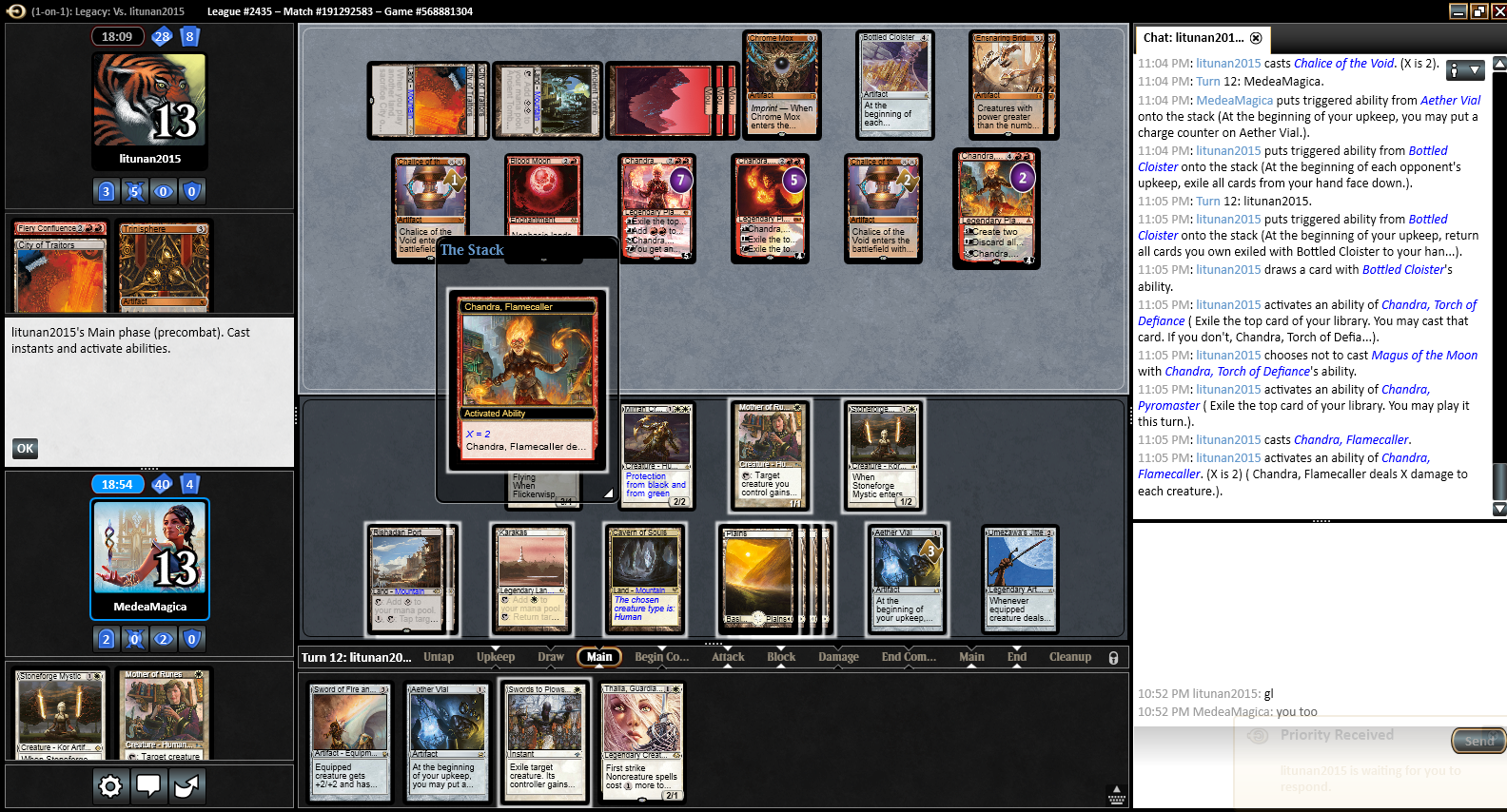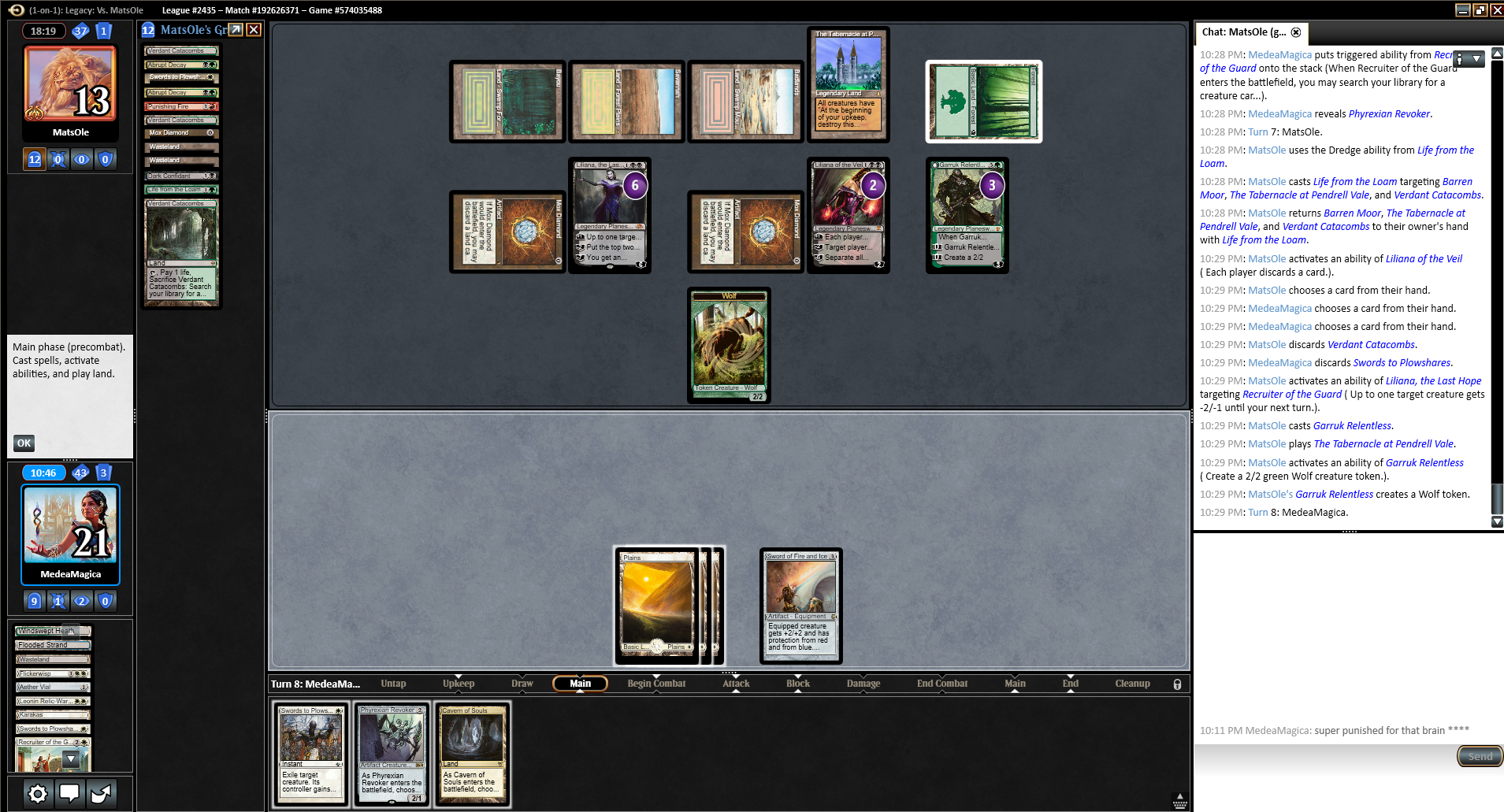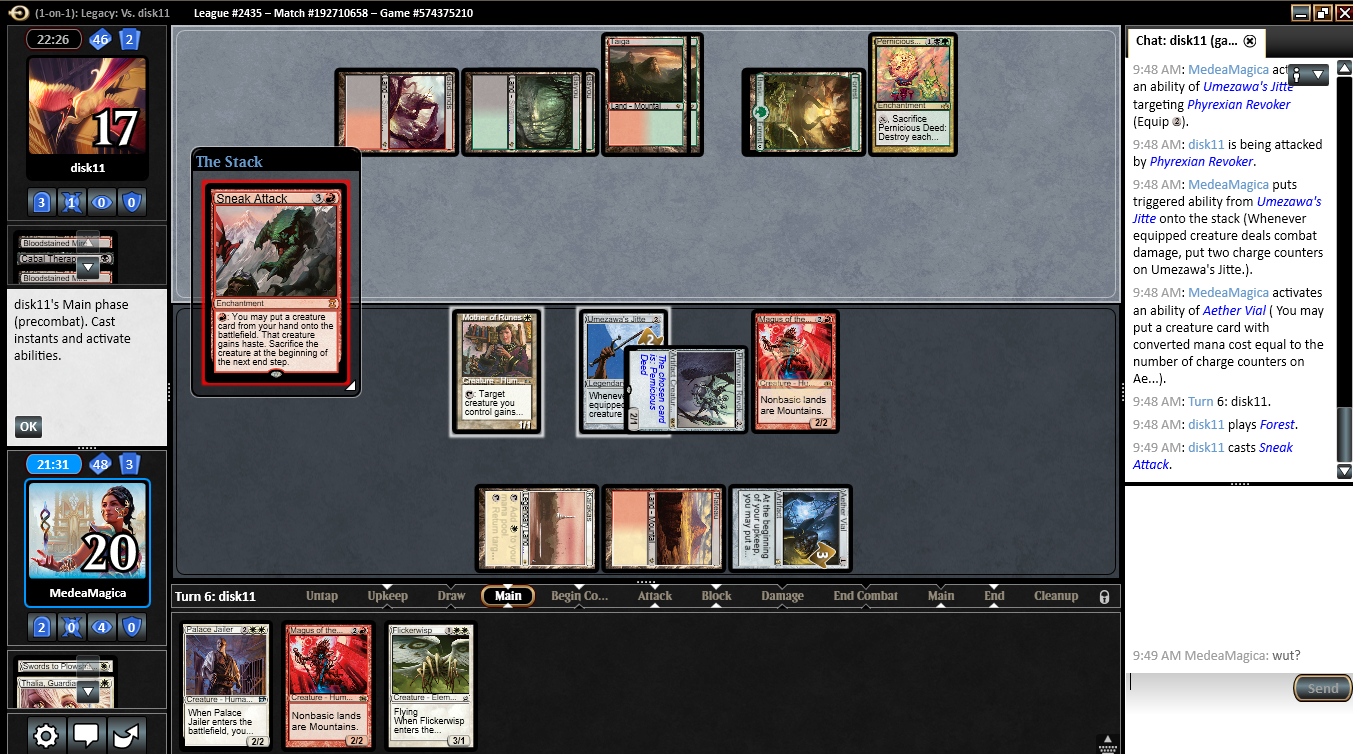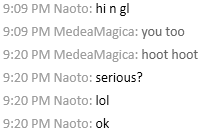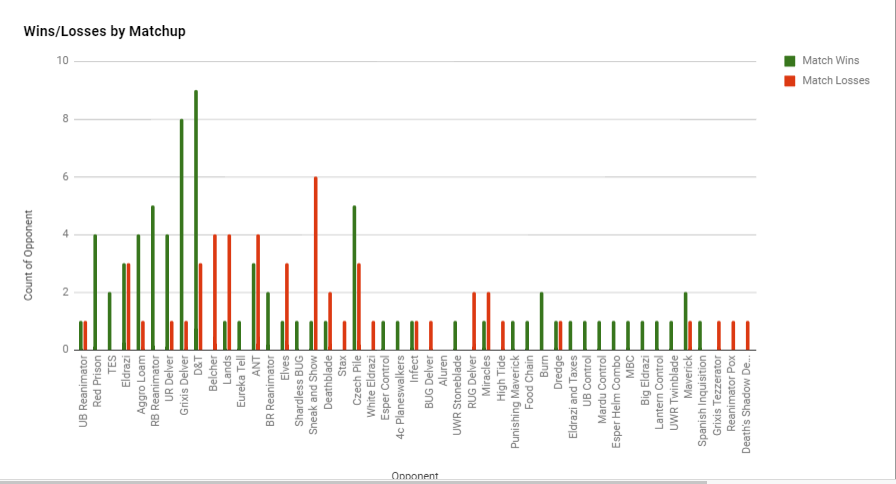Today’s guest article is by Austin local and long-time D&T player Travis Brown. He recently top 8’d the Team Open in Dallas with Jeremy Frye and Will Ho. The content that follows is his and in his style, though I’ve done some editing and formatting. Feel free to give me comments on the guest article, as that may influence how I choose to do guest articles in the future.
Taxing out the competition in Dallas Team Trios
Around Christmas time, Will Ho reached out to me to see if I wanted to team with him and Jeremy Frye as the Legacy player for the team, as people know I always jam D&T in Austin. I knew both of them reasonably well, and luckily both were functional human beings who shower and are good at Magic to boot! Accordingly, I decided to throw down on a sweet team event. Little did I know that I was getting picked up by 2/3rds of the team that would win GP Santa Clara not 2 weeks later.
So… there’s that
Anyway, I had tried a bunch of ideas, but in the end stuck with a traditional and reliable decklist. I opted to stay pretty balanced against an open field, with a slight skew to beating True-Name Nemesis and Stoneforge Mystic decks. I hate losing to them.
Here is the sweet, sweet, basic list we’re using to crush our spicy opponents into a bland, flavorless paste:
Travis Brown, Dallas Team Open
Welp, here is the matchup breakdown
Round 1: RB Reanimator (2-1)
Game 1: My opponent is shuffling in a way where my teammates can clearly see what he is on. They grapevine the info to me, and it pays off. I mulligan once, jam Thalia on turn 2 on the play, and he never hits a second land. The takeaway: Shuffle your cards in a way that doesn’t give away your deck. Also, draw lands.
I boarded as such:
In: 2 Containment Priest, 2 Rest in Peace, 2 Surgical Extraction, 2 Path to Exile, 2 Council’s Judgment
Out: 4 Stoneforge Mystic, 1 Umezawa’s Jitte, 1 Batterskull, 1 Sword of Fire and Ice, 1 Mirran Crusader
Disruption matters far more in this matchup than closing the game quickly, so I cut the entire Stoneforge package.
Game 2: I lose after mulling, and missing 5 lands in a row while he reanimates Iona, Shield of Emeria. I have multiple cards rotting in my hand.
Game 3: I use Surgical Extraction to nab his Griselbrand and follow up with Thalia. After that, I flashed in Containment Priest in response to him casting Reanimate on a Chancellor of the Annex; that feels particularly good, as it causes him to still lose the seven life. That put him to 8, and 2 turns later he is dead.
(1-0)
Round 2: MUD (2-1)
Game 1: I sit across the table from someone I know plays DnT almost religiously. Foiled deck, all that jazz. I keep a hand with Mom, Stoneforge, Flickerwisp, and Swords to Plowshares. Great hand! He wins the die roll and slams a Cloudpost. Oh boy… I get him to 11 with Stoneforge + Flickerwisp. I have been activating Vial every turn on 3 putting nothing into play for a few turns when he slams Ugin, the Spirit Dragon, clears my board, and attacks into my apparent nothing hand with a Kuldotha Forgemaster. I then vial in a Crusader, suit it up with Batterskull, and hit him for 12. That’s why you activate Vial when you have nothing.
In: 2 Containment Priest, 2 Path to Exile, 2 Council’s Judgment, 2 Cataclysm
Out: 4 Mother of Runes, 2 Mirran Crusader, 1 Umezawa’s Jitte, 1 Stoneforge Mystic
Game 2: He jams Trinisphere on turn 1 and then Wastelands me 3 times. We do a bunch of nothing. I finally get back up to 3 lands and slam Flickerwisp to give myself a clock and hit the Chalice of the Void on 1. This unlocked the 2 spot removal spells in my hand. Alternatively, I could have gotten rid of Lightning Greaves with Council’s Judgment. He then proceeds to rip Kuldoltha Forgemaster, suit it up, grab a Blightsteel Colossus, suit it up, and kill me.
Game 3: He puts Pithing Needle on Wasteland, and right before draw Flickerwisp to blink the Needle and triple Waste him, both my teammates pick up their matches.
(2-0)
Round 3: Burn (1-2)
Game 1 he has three 1-drops on the play with the perfect curve topping out into Fireblast. I did not have the nuts, so I lost unceremoniously.
In: 2 Path to Exile, 2 Council’s Judgment, 2 Ethersworn Canonist
Out: 2 Mirran Crusader, 3 Phyrexian Revoker, 1 Recruiter of the Guard
Game 2 I assembled Batterskull and Umezawa’s Jitte. He didn’t have Smash to Smithereens on time. It was that simple.
Game 3 he has removal spells for numerous creatures in the early game, but I stabilized by playing a Sanctum Prelate on 1 with Thalia as backup. I played around Smash to Smithereens since I was at 2 life. He eventually hits the Fireblast after I am unable to close the gap fast enough. Sure enough, he shows 3 Smash to Smithereens and a Grim Lavamancer that he said he couldn’t cast due to Prelate.. (He definitely could’ve). Luckily my teammates saddled up and got there.
The takeaway: Reading is hard, but playing Burn on a nut draw is not.
(3-0)
Round 4: Maverick (2-1)
Game 1: He fetches Savannah and leads on Green Sun’s Zenith for a Dryad Arbor. I go on the mana denial plan with two Wastelands and two Swords to Plowshares for his Dryad Arbor and follow up Scavenging Ooze. Crusader gets there a few turns later after ambushing a Qasali Pridemage and cracking back for lethal damage.
In: 2 Path to Exile, 2 Council’s Judgment, 1 Manriki-Gusari, 1 Containment Priest
Out: 4 Thalia, Guard of Thraben, 1 Sanctum Prelate, 1 Batterskull
Game 2: He goes ham by casting multiple Swords to Plowshares, killing my equipment, getting Jitte online, and casting Zealous Persecution. It was… rough.
Game 3: The matches are 1-1, so this is the deciding one. Time to buck up, Sunshine. We waste each other to very low mana and I have Revoker on Deathrite Shaman to keep us even. I do have an Avenger pecking at him with Manriki-Gusari to put a solid clock on him, and I got to destroy his Batterksull as well. He slams a giant Knight of the Reliquary and I finally vial in my Flickerwisp during his end step to blink his Knight. I rip the land off the top to cast Containment Priest in response to the Flickerwisp trigger, keeping Knight exiled forever. He then tried to Green Sun’s Zenith for a Noble Hierarch at his teammates’ recommendation. It took his entire turn and Containment Priest kept the Hierarch from entering play. Wisp and Avenger win the game soon after.
The takeaway: Play to your outs, no matter how big or small the odds are. Also, reading is important.
(4-0)
Round 5: W Czech Pile (2-0)
Game 1 I get a Vial on board and curve into Mother of Runes, Rishadan Port their land, Thalia and Wasteland, Stoneforge Mystic, and finally Flickewisp the Stoneforge. My Jitte and Sword of Fire and Ice did a lot of work against Deathrite Shaman and a couple of Baleful Strix.
In: 2 Cataclysm, 2 Council’s Judgment, 2 Rest in Peace
Out: 3 Swords to Plowshares, 1 Sanctum Prelate, 1 Phyrexian Revoker, 1 Flickerwisp
Game 2 I get a Rest in Peace online alongside Mom & Thalia. He has Deathrite Shaman, Baleful Strix, and Jace, the Mindsculptor. I realize he has no countermagic, so I bounce Thalia on his end step. I then slam Cataclysm and the following conversation ensues:
Opp: “Let me read this.”
Me: “Sure.”
Opp: “Wait, this kills Jace, doesn’t it?”
Me: “Yep”
Opp: “AND you get to keep your stupid enchantment???”
Me: “Resolves?”
Opp: “Resolves.”
I keep Mom, Vial on 2, Rishadan Port, and Rest in Peace vs his Swamp, Deathrite, and Baleful Strix. The game soon ends when he realizes he can’t beat the board due to the Rest in Peace.
The takeaway: Cataclysm is the most fun DnT can have.
(5-0)
Round 6: Maverick (1-2)
Game 1: I win an incredibly awkward series where my opponent casts Green Sun’s Zenith for 1 less than intended due to miscounting Thalia math, meaning he can’t fetch Qasali Pridemage to pop my Jitte. The Jitte+Thalia+Karakas+Vial combo ends up beating a 6/6 Scavenging Ooze among other things, and my opponent dies.
Same SB strategy as match 4
Game 2: I mull to a Karakas, Vial, Mom, Stoneforge, and Swords to Plowshares hand and snap it off. He Wastelands my land and uses Abrupt Decay my Vial. I never drew another land, and since he slammed Gideon, Ally of Zendikar on turn 3, I died quickly.
Game 3: This played similarly to game 2, except I do have a few lands. He draws 3 spot removal spells and Zealous Persecution. I die to Gideon and a bunch of big idiots.
The takeaway: Draw better scrub.
(5-1)
Round 7: Burn Misplays (2-0)
Game 1: I am supposed to be super dead. Just… like incredibly dead. I played it as well as I think anyone could, but if my opponent didn’t miss a bunch of Eidolon of the Great Revel triggers, I probably would have ended up at -14 or -16 life. But he does miss the triggers, so I suit up Thalia with a Jitte and eventually get there. I’d feel bad if I also didn’t feel that my opponents’ triggers are their responsibilities.
See sideboarding from match 3
I get Thalia into play and kill multiple guys while Aether Vial slowly ticks up. While the game did not conclude, it was looking very good for me. Good job teammates picking up those quick W’s!
The takeaway: triggers are hard. Just like math. And magic.
(6-1)
Round 8: Grixis Delver (2-0)
This was our feature match, and my closest to being on camera all weekend. Game 1 my opponent plays the standard delver game on the draw. Mom + Thalia clogs up the ground while multiple Flickerwisps clock my opponent in the air.
In: 2 Rest in Peace, 2 Path to Exile, 2 Council’s Judgment
Out: 3 Phyrexian Revoker, 1 Recruiter of the Guard, 2 Mirran Crusader
Aside: I’m still not 100% on this matchup, as I think I’m supposed to trim another card instead of the second Recruiter, but with all the Bolts and Forked Bolts in Grixis Delver, it felt right.
This game was very sweet. I start by quickly Wasting, then fetching Jitte with Stoneforge. He sticks a Young Pyromancer, but due to an uncounterable Thalia, he was only able to make 1 token. I suit up the Stoneforge with Jitte and attack with both creatures, and he Bolts the Stoneforge, and triple blocks Thalia to trade the Young Pyromancer and 1 token for her. Luckily I got to then slam another Thalia. He untaps and Bolts Thalia #2. I play a Flickerwisp to hit the token. He slams Gurmag Angler. I hit him to 9, play another Flickerwisp. I Flickerwisp my Flickerwisp and then flicker the Gurmag Angler to save myself five life. He slams another Gurmag. I attack for 6 with the Wisps putting him to 3, and then play a third Flickerwisp. I do the same song and dance as before, blinking his black source to play around a potential Dread of Night. He attacks with both Zombie Fish. I take ten. Then he passes and I kill him. While the feature match said we won 2-0, we really won 3-0.
The takeaway: Flickerwisp is the best card ever. It just is.
(7-1)
Round 9: Mana Dredge (2-1)
Game 1: He mulls to 6, keeps, plays Lion’s Eye Diamond, and passes. I play Vial, and pass. He draws, and passes back. I slam Thalia. At this point, he can’t do much. He managed to get a few tokens, but 2 Flickerwisps backed by Mother of Runes eventually get there…somehow. How did I beat Mana Dredge on the draw? I don’t know.
In: 2 Containment Priest, 2 Rest in Peace, 2 Surgical Extraction
Out: 2 Stoneforge Mystic, 1 Sword of Fire and Ice, 2 Mirran Crusader
Game 2: I find out Will has lost, and Jeremy is down a game. My opponent kills me turn 2. That’s about it. Hooray Dredge!
Game 3: This is where things get nutty. Jeremy won his game 2, so we are still live. I keep Surgical Extraction, Rest in Peace, Plains, Wasteland, Vial, Thalia, and Mom. I play Plains and Vial. My opponent then tanks, and discusses “hitting it now”. I have to assume he has Nature’s Claim in hand. They decide against playing it, and play City of Brass into Faithless Looting, discarding Narcomoeba and Golgari Grave-Troll. I Surgical the Troll and see 2 Cephalid Coliseum, Breakthrough, Nature’s Claim, and some irrelevant cards. I draw another Mom, decide to Wasteland the City of Brass, and play Mom. He then plays Coliseum and Breakthrough, discarding his whole hand. It all comes down to this draw. I rip the Plains and slam Rest in Peace. Then Thalia and the Stoneforge off the top quickly finish the game. Jeremy is able to then hardcast Emrakul and attack twice to win the game.
The takeaway: Play to your outs and hope for the best.
We finished as one of only 3 teams at 8-1 (no X-0’s) going into day 2 and then enjoy margaritas.
Round 10: Esper Stoneblade (2-1)
Game 1: I feed off the salt of my opponent constantly complaining about how “perfect” my draws are (as I never hit land 4…). I did beat him over the head with a Sanctum Prelate on 1 and a Serra Avenger, so that’s cool. He does eventually Engineered Explosives away my board, but Mom survived. She grabbed a Batterskull and Sword of Fire and Ice. It was pretty sweet.
In: 1 Manriki-Gusari, 2 Council’s Judgment
Out: 2 Swords to Plowshares, 1 Batterskull
Game 2: He stabilizes at 11 life when he rips the Disenchant off the top naturally. I protect my Sword of Fire and Ice with Flickerwisp, but he follows up with a Snapcaster to Disenchant the Manriki. This lets his True-Name Nemesis get suited up with Batterskull, and it’s over after that.
Game 3 :I have uncounterable Mom into uncounterable Thalia. My teammates both pick up their wins, but after discussing it with my opponent, we decided it would’ve almost definitely gone my way.
The takeaway: when your opponent gets salty, enjoy the seasoning :P.
(9-1)
Round 11: ANT (0-2)
Game 1: I keep a solid hand, but he wins on turn 2 on the play. Not much to be said.
Sideboarding didnt matter because he stormed off on turn 2 through a Revoker naming Lion’s Eye Diamond and a Surgical Extraction after I mull to a functional hand. Unfortunately another teammate lost.
The takeaway: Sometimes they’ve got you.
(9-2)
Round 12: Grixis Delver (0-2)
Game 1: He plays double True-Name Nemesis after using Daze on my Vial. I died very quickly afterwards.
In: 2 Path to Exile, 2 Council’s Judgment, 2 Rest in Peace
Out: 3 Revoker, 1 Recruiter, 1 Wisp, 1 Crusader
Game 2 was… odd. He kept Daze in on the draw. It also proved once again how filthy Gitaxian Probe is as a Magic card. I play land go. He plays land, Ponder. I untap and play Stoneforge, but he Dazes it. He then casts Probe into Cabal Therapy, taking out my removal spells. My Thalia then sticks and I Wasteland his only land. I then proceed to lose after playing 2 Flickwisps to clock him when he drops an Izzet Staticaster. He then hits a True-Name Nemesis to brickwall my Batterskull. He hits Dismember the turn before I can suit it up with the Sword of Fire and Ice. One of my teammates also lost, so now we are in the rally bracket.
The takeaway: Always leave in 1 revoker for staticaster. Ouch.
(9-3)
Round 13: DnT mirror (2-0)
Game 1: I took the bold line of playing lots of creatures and he had multiple Thalia. Pro plays on my part. I know.
In: 2 Path to Exile, 2 Council’s Judgment, 1 Manriki-Gusari
Out: 4 Thalia, 1 Sanctum Prelate
Game 2: He mulligans, I Path his Mom, and we proceed to durdle while playing out another Mom each. I get Jitte on the board after he Revokes it, and I have a Serra Avenger vs his Crusader. I eventually hit my third land to exile his Mom and another removal spell to kill the Revoker. He casts another Revoker before I can equip, but both my teammates win. I have Mom and Jitte advantage, so I was heavily favored that game.
The takeaway: Draw more relevant cards in the matchups. You will win.
(10-3)
Round 14: BUG control (2-0)
Game 1: I know my opponent is on a grindy midrange deck since he is a local from my area. As such I keep a Wasteland and Vial hand with an insane curve up. He then takes the Vial with Thoughtseize. Luckily I proceed to draw 3 lands in a row so I can deploy Mom into Thalia into Recruiter into Stoneforge into Flickerwisp. The combination of Batterskull and Sword of Fire and Ice outraces his True-Name Nemesis before it picks up his maindeck Jitte.
In: 2 Cataclysm, 2 Council’s Judgment, 2 Rest in Peace
Out: 1 Sanctum Prelate, 2 Swords to Plowshares, 1 Flickerwisp, 1 Pyrexian Revoker, 1 Serra Avenger
Game 2: I get a Mom and Thalia online with Vial. He struggles to draw relevant cards with Sylvan Library due to my Rishadan Port and Thalia messing with his mana. He misses a few land drops and I start vialing in an army. He has to take time off to Thoughtseize my Crusaders, so I beat him down with Wisps and Thalia. The game ends quickly.
The takeaway: Really, rattle those lands off the top so you can do absurd things.
(11-3, locked for top 8)
Round 15: Aggro Loam (1-2)
A quick aside: I understand Magic is hard, and that Legacy is arguably the most complex format. But remember to play at a reasonable pace. My opponent this round was new to the format, but took a very long amount of time between decisions despite me prompting him multiple times to make one.
We offer the intentional draw to our opponents, but they are X-3-1 so they have to turn it down.
Game 1: I punt by attacking with Prelate on 2. I know, I know. I should have waited, but it had been a long day and I did some math wrong. After my Prelate went down, my Moms followed behind it (Punishing Fire is a hell of a card). His 16/16 Knight of the Reliquary killed me quickly. Unfortunately it took a long time to get there, and even the judge was shocked when she asked about game 2, and I clarified game 1 concluded. I then asked a judge to stay at the table and monitor us both for rate of play.
In: 2 Cataclysm, 2 Rest in Peace, 2 Council’s Judgment
Out: 2 Mirran Crusader, 1 Pyrexian Revoker, 1 Flickerwisp, 2 Swords to Plowshares
(I have no idea if this board plan is right)
Game 2: I get a vial online, and he plays Mox, Mox, Land, Liliana of the Veil. From there I proceed to vial in Mom, Stoneforge, and Angel. I then get batterskull online and during my opponent’s end step put in a Wisp to hit my Batterskull. After I attack on my next turn, I play Cataclysm, keeping Serra Avenger, Vial and Port. I then play a Plains and Batterskull comes back. I tick the Vial up to 3 and Port his Maze of Ith. I hit him down to 6, and Vial in another Wisp. The game ends.
Game 3 is looking to be a slugfest. During this game my opponent received multiple verbal warnings from the judge for slow play, as he was tanking as early as turn 1. We had about 8 minutes to complete the entire game. Eventually I have lethal on board, but I likely lose due to my opponent finding his 1-of Golgari Charm. That being said, my teammates pick it up and we are on to the top 8! Thank you Will and Jeremy!
Quarters: Lands
Going into the round, I’m planning out my lines of play, my board strategy, and generally just getting a breather.
Sure enough, we miss out on being the feature match by 3%! I sit down across from my opponent, see the decklist, and the first cards that catch my eye are Elvish Spirit Guide, Vampire Hexmage, and Sylvan Safekeeper… This isn’t LANDS! This is Turbo Depths! My opponent says he thinks we would’ve gotten the feature if SCG had posted the correct deck name, and I agree. I am also excited because in my experience the matchup is great!
Game 1: I draw nothing and my opponent 20/20’s me out on turn 4.
In: 2 Surgical Extraction, 2 Path to Exile, 2 Council’s Judgment
Out: -4 Stoneforge Mystic, -1 Batterskull, -1 Sword of Fire and Ice, -1 Mirran Crusader
Game 2: I finally draw a Flickerwisp after forcing him to blow multiple lands to keep his Sylvan Safekeeper around. The 3/1 kills the 20/20 and he scoops.
Game 3: I am about to snag Thespian’s Stage with Surgical Extraction and play Revoker naming Vampire Hexmage to seal it up. Unfortunately, Jeremy had a rough matchup, and Will mulliganed into oblivion and drew even worse. The run ended in the quarters, but I had a blast, and I was ecstatic to finally top 8 a major tournament with 2 awesome dudes.
The takeaway: eat more peanut butter sandwiches.
The sample of decks I faced was incredibly odd and the fact that I only played against 5 decks with Brainstorm is pretty silly, but it goes to show you why playing a deck you know is so important. It lets you adapt to any tournament or meta (unless it is the Belcher/Oops/Elves meta).
Going forward, I would change very little about the deck. I may change the board a bit (specifically Manriki is always a card that I can substitute out for things like Sword of War and Peace, but I think they are close). I would also like a second Prelate in the 75, but I have no idea what to cut.
Cataclysm is staying in the deck for the foreseeable future. That card is not only fun to play, but wins you games no other card could. Plus it is great vs Pile and Lands, which are both incredibly relevant right now. Otherwise the deck felt great, and I would recommend it to anyone else who likes DnT.
Thank you for reading my rather exhaustive report, and just keep taxing ’em out!

